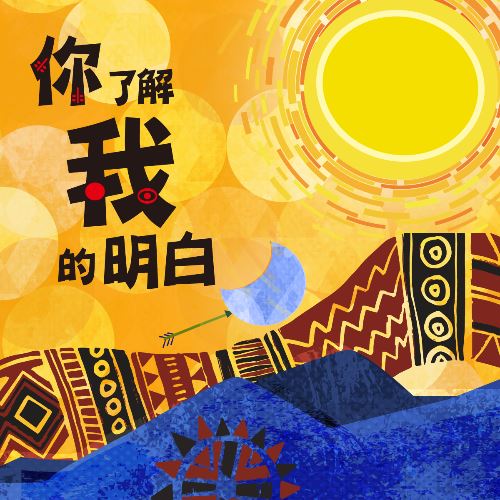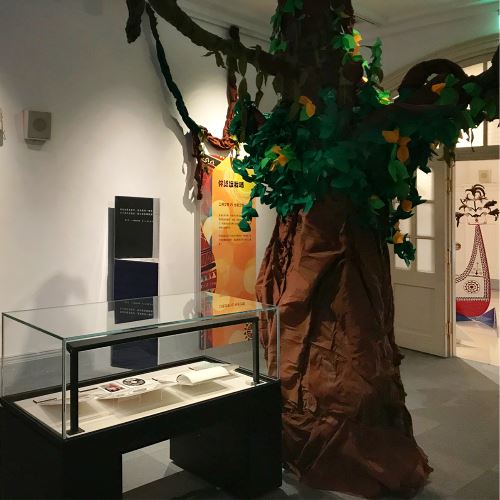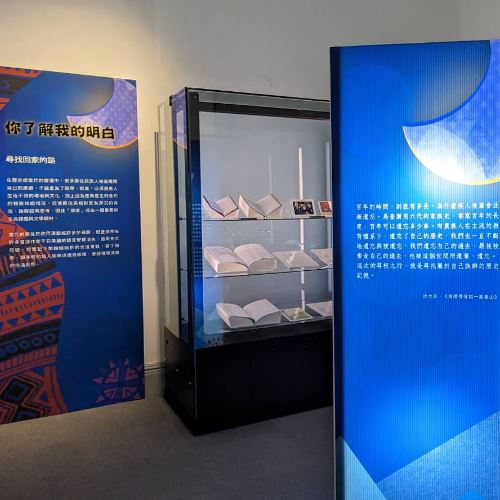Rise of Resistance Literature ✧ Pens for Singing ✧ Supported by Indigenous Literature Awards
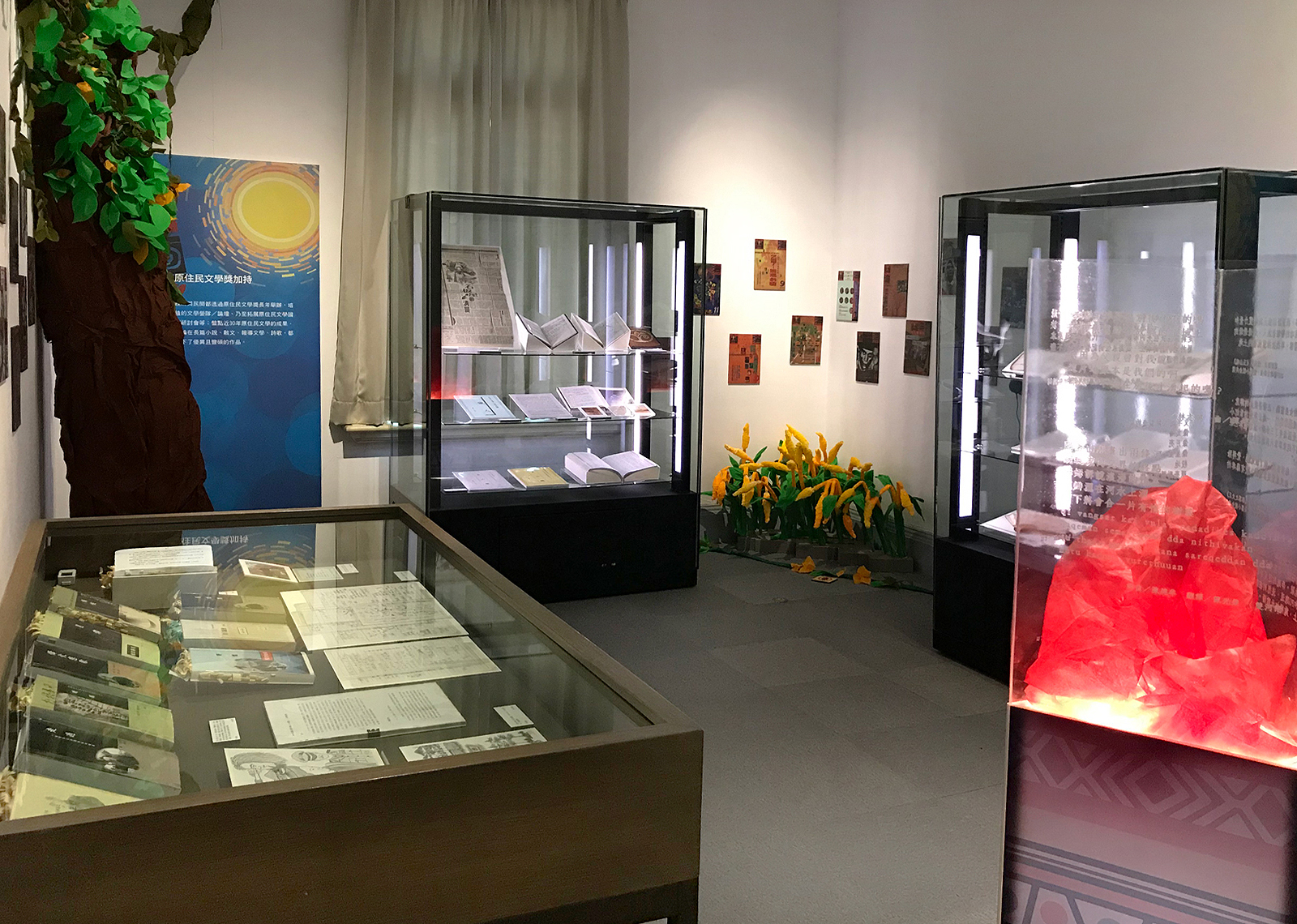
Rise of Resistance Literature
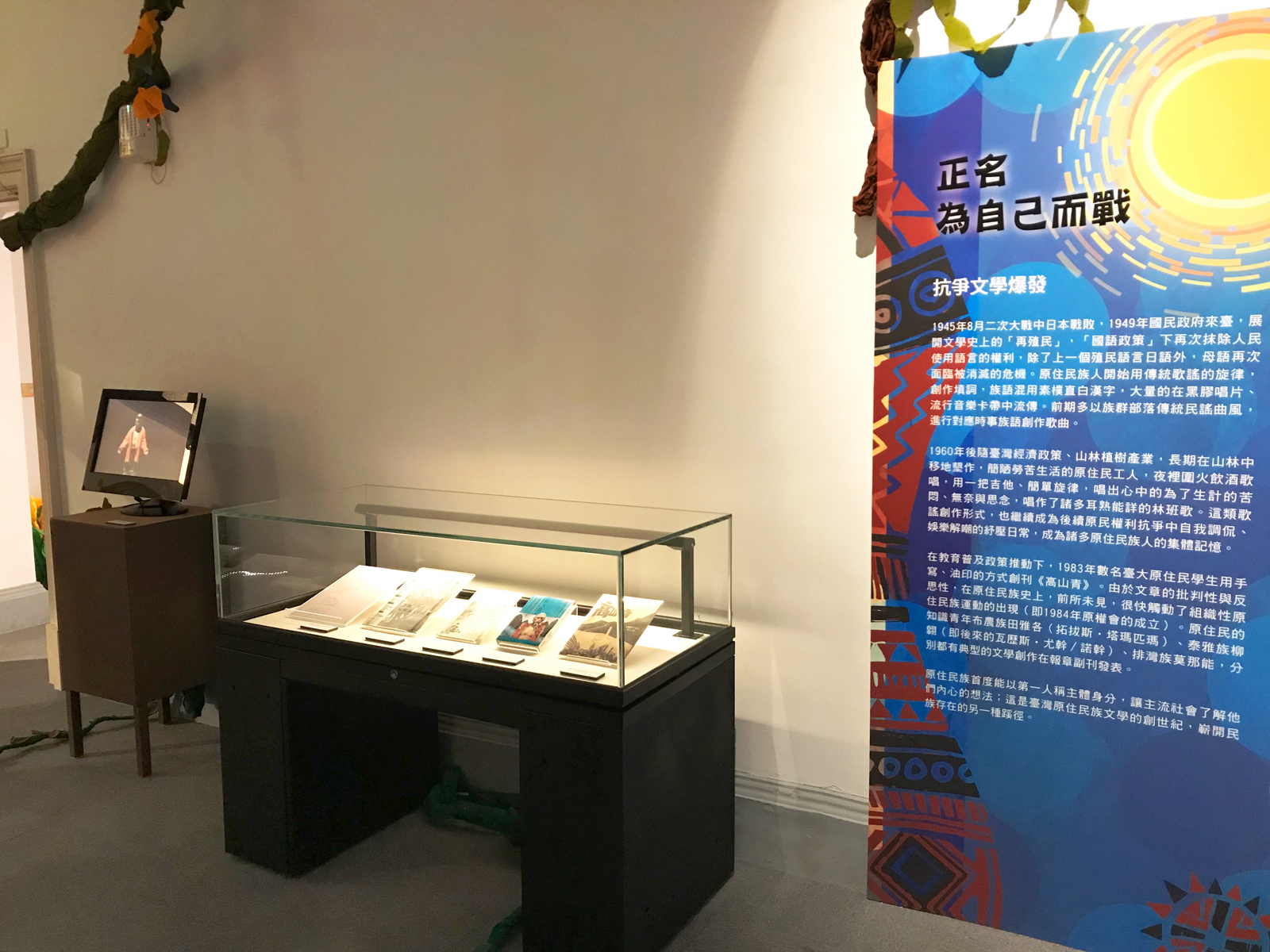
In August 1945, during the second world war, Japan was defeated. In 1949, the Nationalist government retreated to Taiwan and a period of "re-colonization" began in the history of Taiwan literature. The "Mandarin Policy" eradicated people's right to use their own languages. Apart from the previous colonial language, Japanese, the mother tongues spoken in Taiwan faced the crisis of extinction again. Indigenous people started to write lyrics with the melodies of folk songs. The indigenous lyrics were mixed with simple, straightforward Chinese. The songs were spread far and wide in the form of vinyl records and pop music cassette tapes. In the early period, indigenous composers adopted traditional tribal folk music to write songs that reflected the current events.

◈ Photo of Phonograph Record
The covers and original labels of FIRST VOLUME OF TAIWAN INDIGENOUS DANCE, FOURTH VOLUME OF TAIWAN INDIGENOUS FOLK SONGS, SELECTED TAIWAN INDIGENOUS FOLK DANCE. (Preserved by Eric Scheihagen)
After 1960, new economic measures were adopted and the afforestation industry began to thrive. Indigenous migrant workers who spent a long time in afforestation projects were leading a frugal lifestyle. In the night, they gathered around the fire to sing and drink. With one guitar and a simple melody, they were able to express the distress, powerlessness and yearning in their hearts. As a result, they made many "Linban (different forest compartments for management) Songs." This type of songs later on became a representation of the self-deprecation and humor that eased the stress of daily life during the fights for indigenous rights and turned into a collective memory of many indigenous individuals.
In 1983, with the spread of education, several indigenous students studying at National Taiwan University founded GAO SHAN QING, a publication that was handwritten and printed with a mimeograph machine. The critical viewpoints and reflectiveness of the articles were unprecedented in the history of indigenous peoples in Taiwan. Soon afterwards, the publication led to organized indigenous movements (e.g. the foundation of The Indigenous Rights Committee in 1984). Indigenous intellectuals, such as Topas Tamapima (Bunun), Walis Nokan (Atayal), and Malieyafusi Monaneng (Paiwan), all had their literary works published in newspaper supplements.

◈ GAO SHAN QING
It was an important publication for the rising indigenous awareness in the 1980s. It was founded by indigenous students of National Taiwan University. The publication was hand written and printed by a mimeograph machine. It witnessed the emergence of indigenous movements.(Provided by Library of Taiwan Literature, Aletheia University)
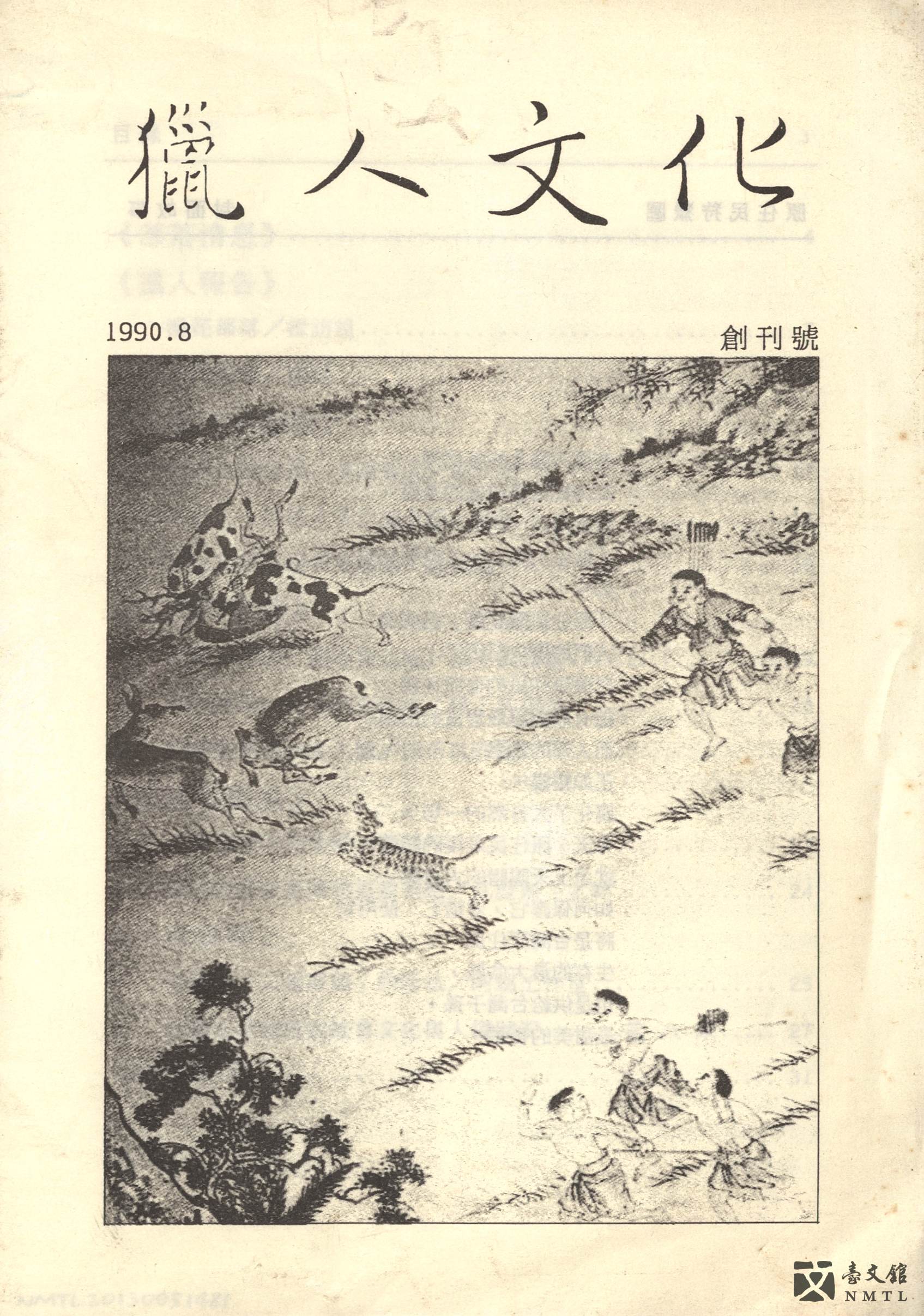
◈ HUNTER CULTURE (First Issue)
Published on August 5, 1990. The publisher was Walis Nokan. Up to June 1992, there were 18 issues published.(Provided by Chen Chien-wu / From the collection of the library at the National Museum of Taiwan Literature)
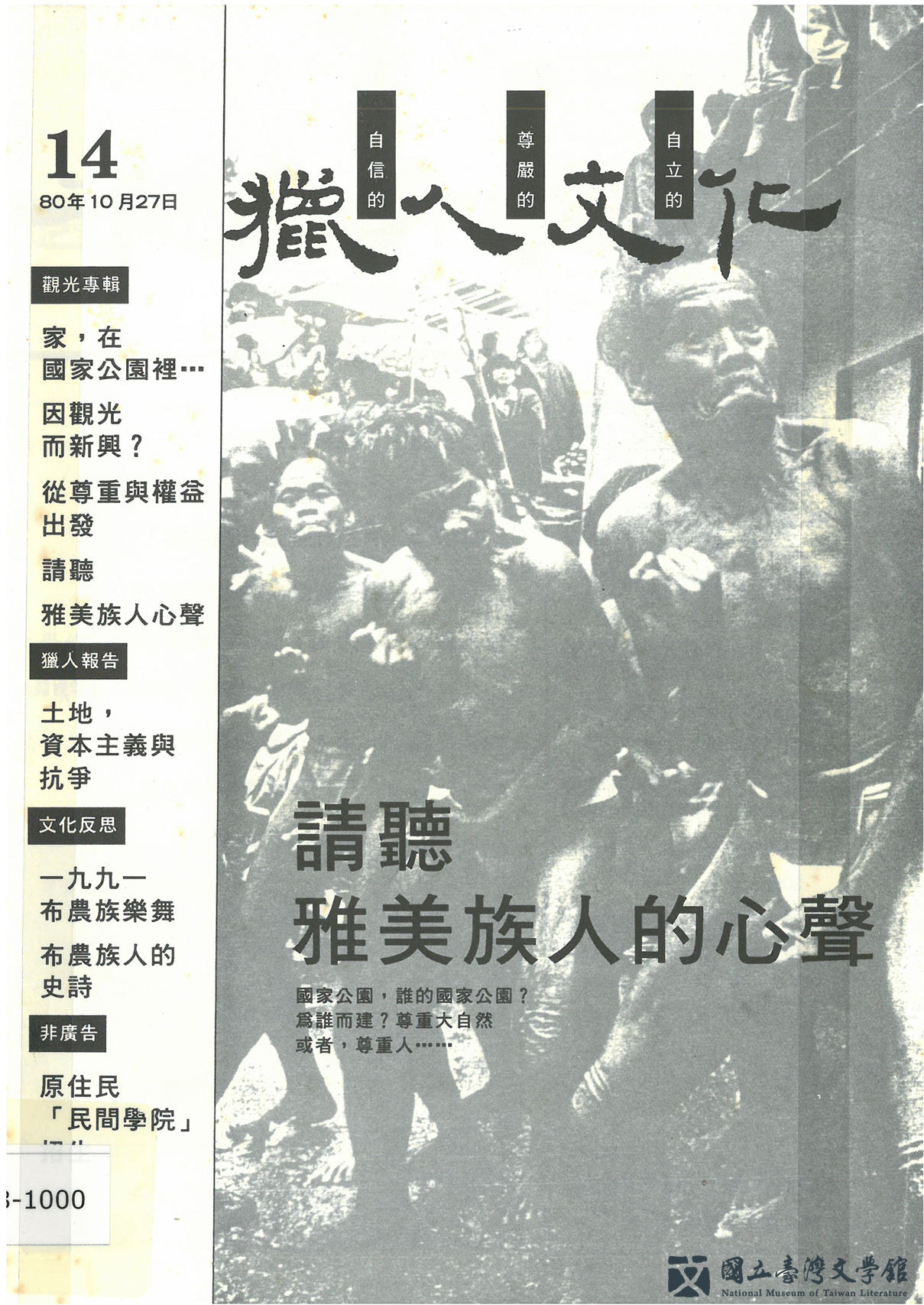
◈ "Please Listen to The Yami"
The 14th issue of HUNTER CULTURE, published in October 1991.(From the collection of the library at the National Museum of Taiwan Literature)

◈ POIGNANCY OF THE MOUNTAINS: A SELECTION OF TAIWAN INDIGENOUS NOVELS
Published by Morning Star in 1987. It was the first indigenous publication that allowed the mainstream society to see the situation of indigenous peoples.(Provided by Lee Kuei-shien / From the collection of the library at the National Museum of Taiwan Literature)
This was the first time that indigenous peoples were able to use the first-person identity to speak to the mainstream society about their inner thoughts. This was the genesis of Taiwan's indigenous literature, allowing indigenous peoples to open up another way for their autonomous existence.
◇◆◇◆◇◆◇◆◇◆◇◆◇
Pens for Singing
In 1993, the first issue of TAIWAN INDIGENOUS VOICE BIMONTHLY was published. The chief editor was Paelabang Danapan. The editing members included Kong Ji-wen, Bjanav Zenror, Agilasay Pakawyan, Tulbus Tamapima, Adaw Palaf, Pasuya Poiconʉ, Syaman Rapongan and Wubark Kudjayau. These members were people proficient in writing, professional writers, and researchers that appeared ten years before the publication was founded. They continued to support and help expand the publication, which served as a platform for the voice of indigenous peoples.
How is indigenous literature defined? There are three definitions made by the academia:
1. Identity: "Indigenous literature" is strictly defined by the focus on "identity." It is a non-negotiable Archimedean point in indigenous literature. Indigenous peoples must tell their stories and sing their songs from the first person point of view. They should also not restrict themselves with the same materials; instead, indigenous writers should create their own literary world. (Paelabang Danapan)
2. Topic: Regardless of the language used and the author's identity, as long as a work describes the thoughts, emotions, or experiences of indigenous peoples, it can be seen as indigenous literature. (Pasuya Poiconʉ)
3. Language: Whether indigenous literature is defined according to identity or topic, it has to be written in the author's mother tongue. Only in this way can its unique and subjective literary meaning be established. (Walis Nokan)
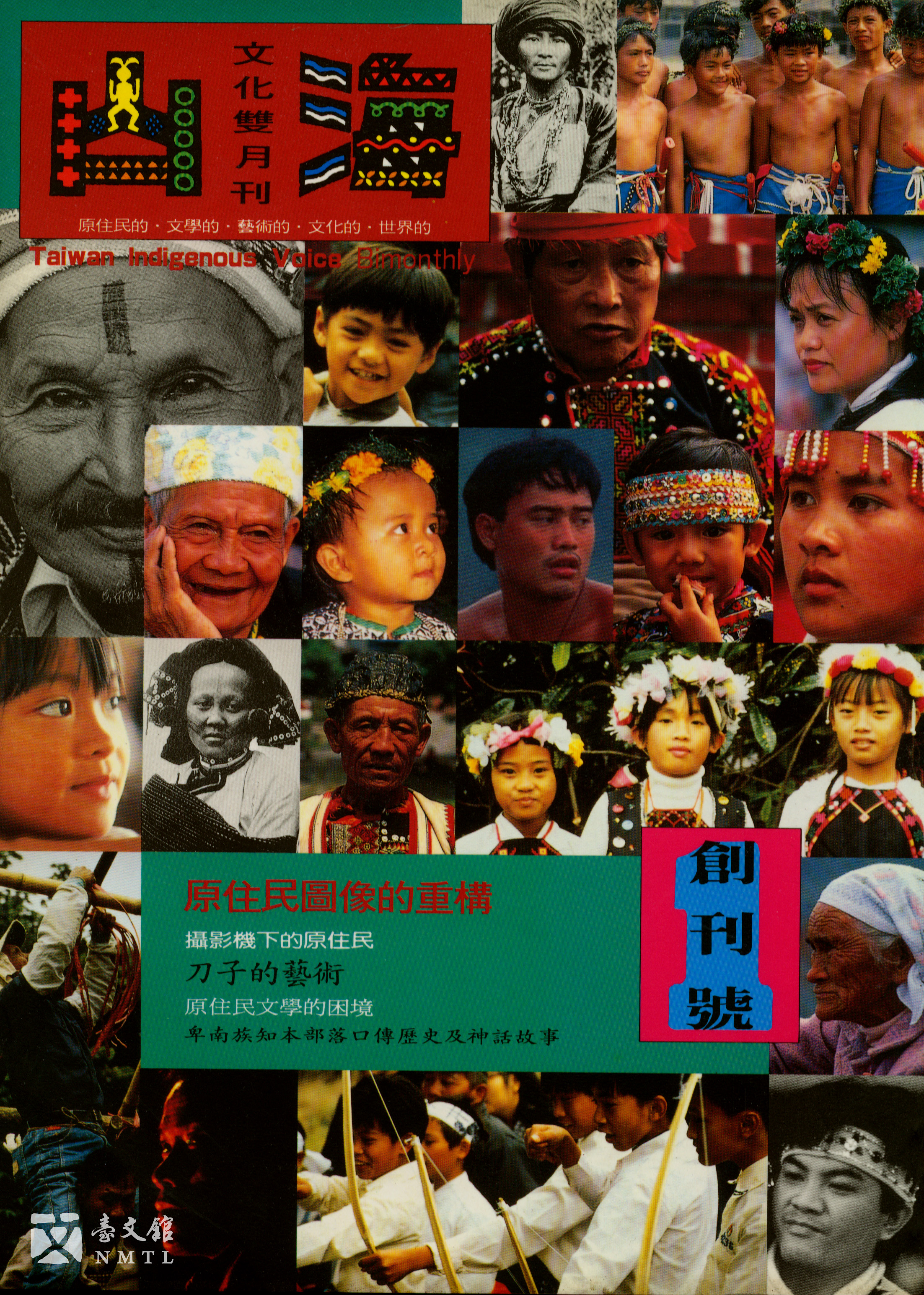
◈ First Issue of TAIWAN INDIGENOUS VOICE BIMONTHLY
The foundation of TAIWAN INDIGENOUS VOICE BIMONTHLY helped build a cultural platform for indigenous peoples. The publication allowed them to express their literary talent, artistic imagination, cultural innovation, and unique political and economic views. In the long process of establishing the indigenous identity, it played the role as an important platform and bridge. The publication has been in existence for almost 30 years; despite being suspended after the press gained freedom, it has continued to protect indigenous peoples' most valuable assets by holding literary awards and publishing books.(Provided by Tsai Yu-ling / Kept in National Museum of Taiwan Literature)
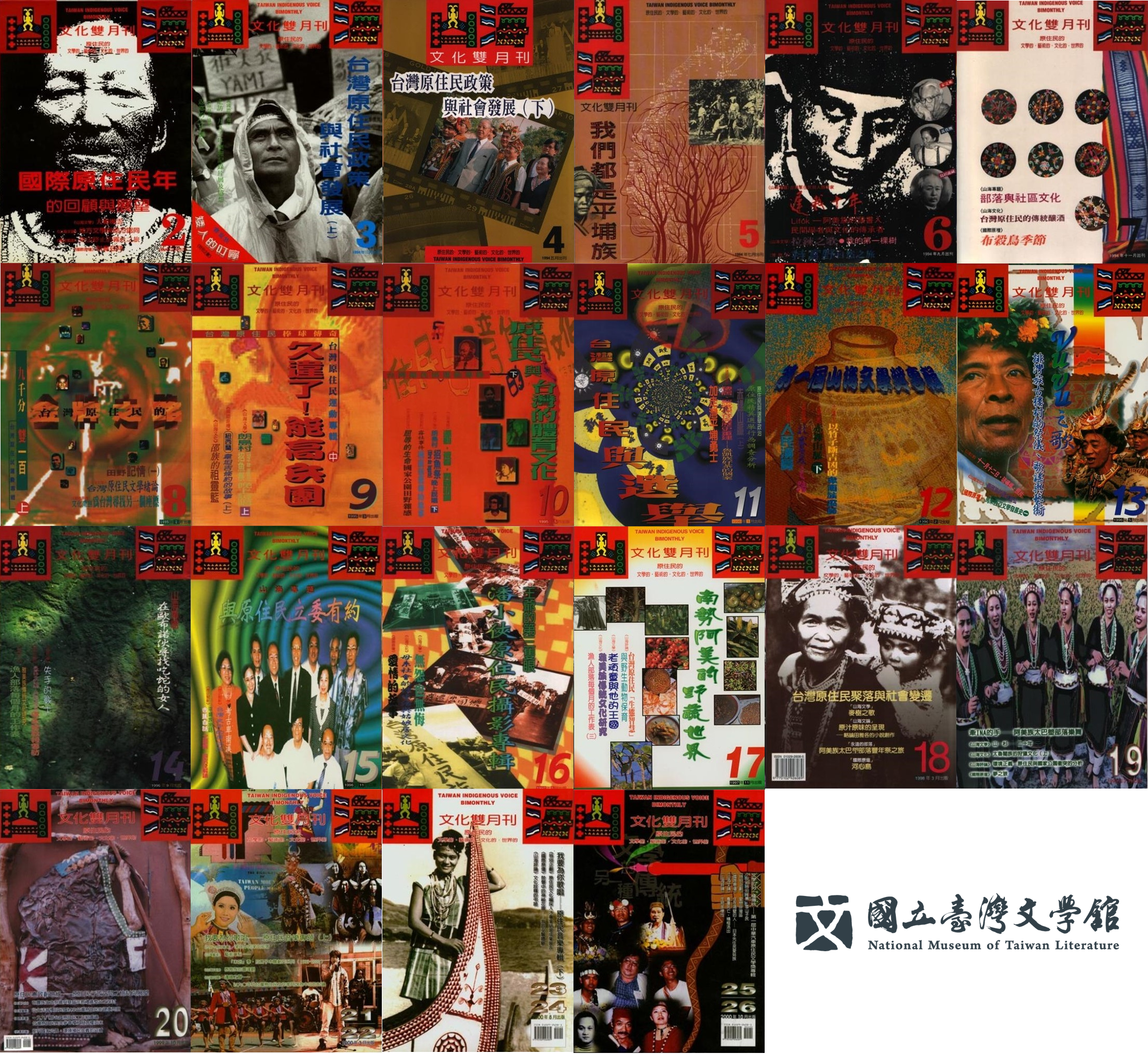
◈ Covers of TAIWAN INDIGENOUS VOICE BIMONTHLY
Covers of TAIWAN INDIGENOUS VOICE BIMONTHLY.(Provided by Shan Hai Culture Press)
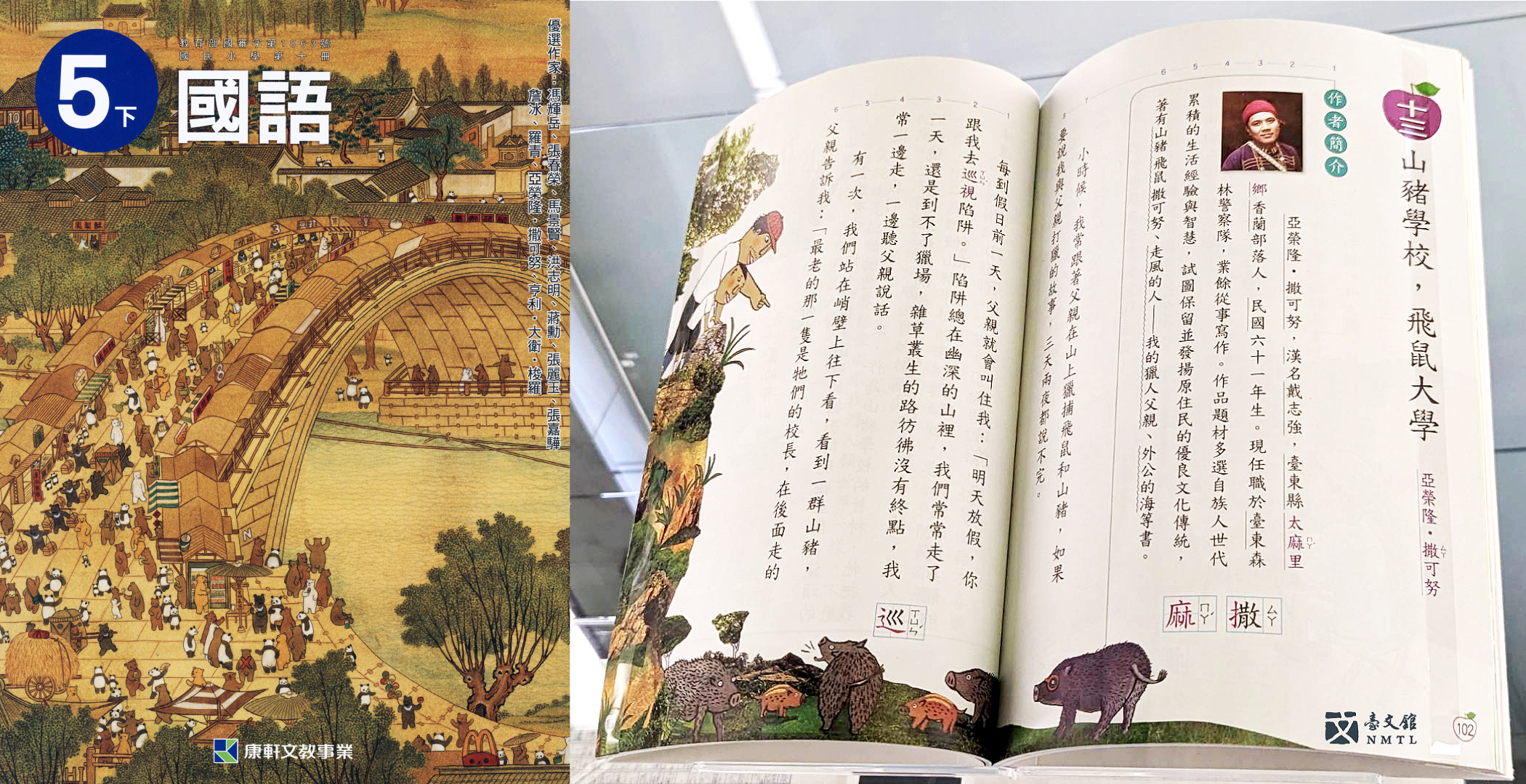
◈ Textbook of THE SAGE HUNTER
THE SAGE HUNTER was written by Ahronglong Sakinu, a Paiwan native. This book illustrates the hunt gin culture passed on to him by his grandparents and professor father, hoping to share the knowledge about the ecosystem and traditional values with younger generations. Apart from the article "Wild Pig School, Flying Squirrel University" which was included in elementary school textbooks, this book was once chosen as a must-read book by the East Asian Language Program of Harvard University. It was also made into a movie.(From the collection of the library at the National Museum of Taiwan Literature)
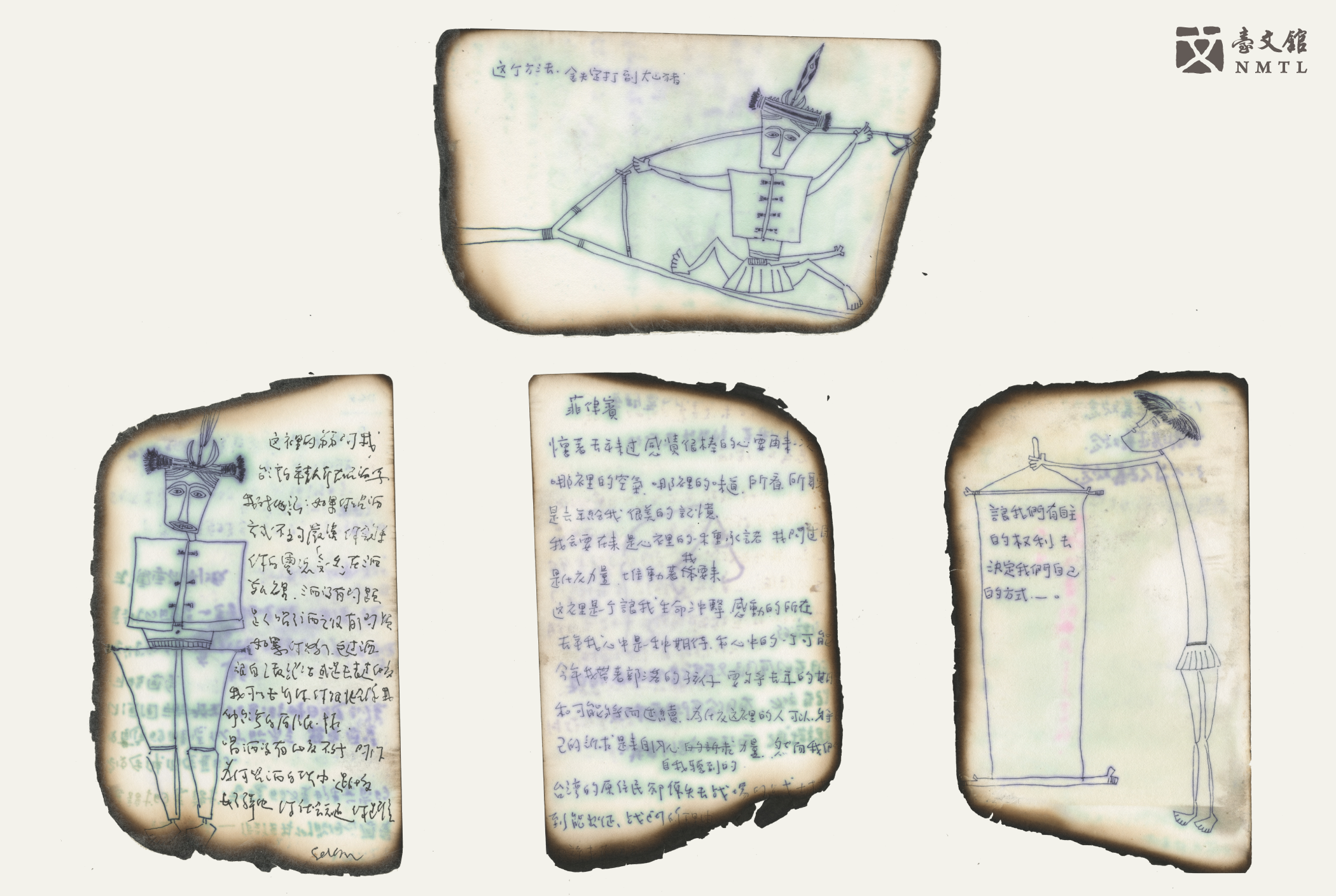
◈ Two Restored Burned Notebook Pages
In 2019, the youth association caught fire and the fire went all the way to the residential house. The restored manuscript was the only thing saved from the fire. Ahronglong Sakinu rejuvenated the youth association in 2002 and founded the Hunter School. The school does not teach students how to hunt; instead, it is more like a charity platform for indigenous culture in nature. It proactively responds to issues of public concern, sing for nature, and create touching connections between nature and indigenous cultures.(Donated by Ahronglong Sakinu / Kept in National Museum of Taiwan Literature)
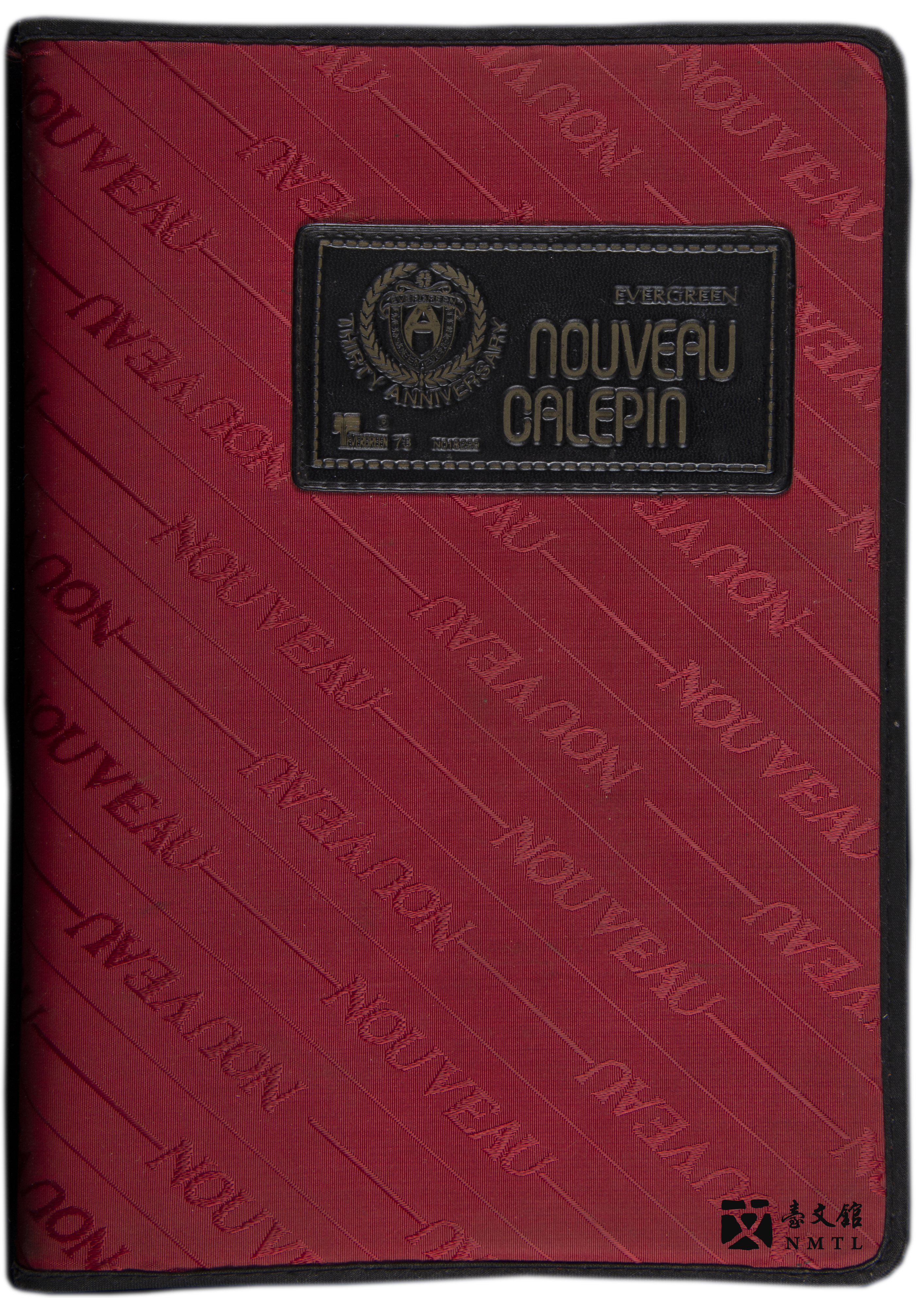
◈ Bukun's Diary
In the diary of June 11, Bukun depicts his trip to Namasia Church with his friends to discuss matters regarding restoring the name of the Bunun people. However, they encountered a mudflow due to typhoon. In the diary of June 12, Bukun writes about President Lee Teng-hui's visit to the U.S. He also analyses the Taiwan-U.S. relations and the cross-strait tensions between China and Taiwan.(Donated by Bukun Ismahasan Islituan / Kept in National Museum of Taiwan Literature)
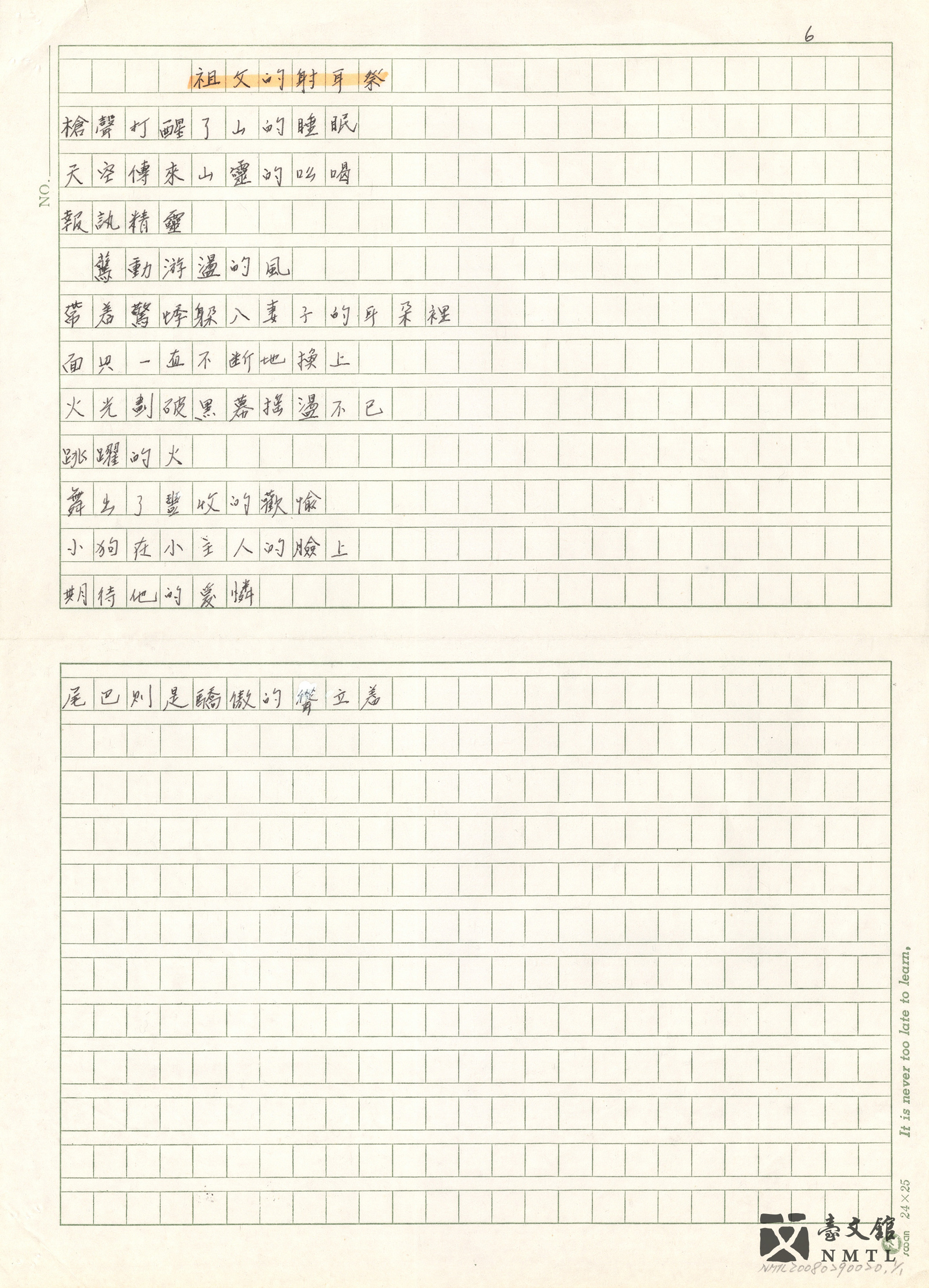 .
. 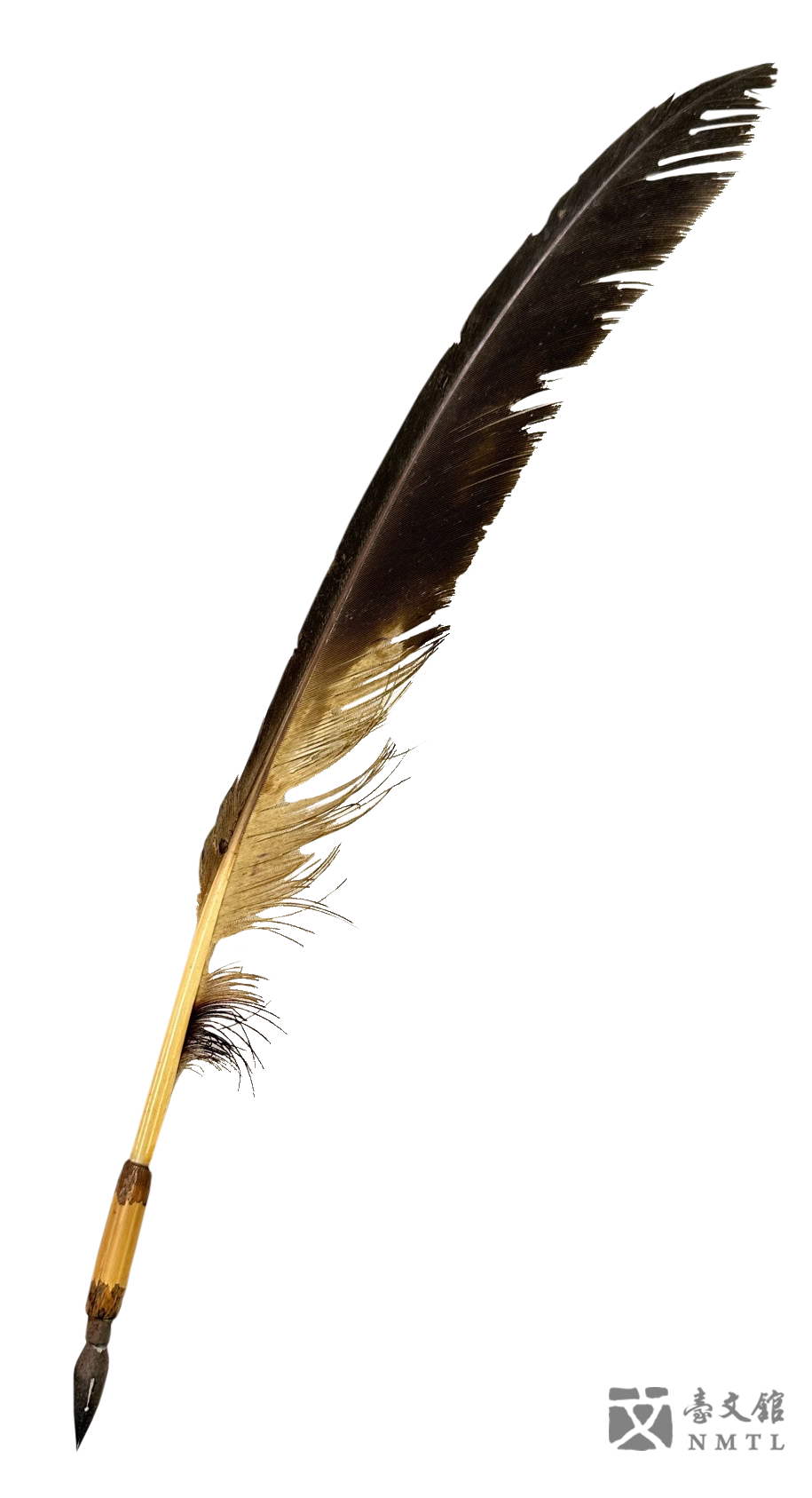
◈ Bukun, "Granpa's Malahtangia"
Bukun Ismahasan Islituan, a Bunun native. He plays a prominent role in indigenous movements. This is the manuscript of his poem and the self-made feather pen he usually used.(Donated by Bukun Ismahasan Islituan / Kept in National Museum of Taiwan Literature)
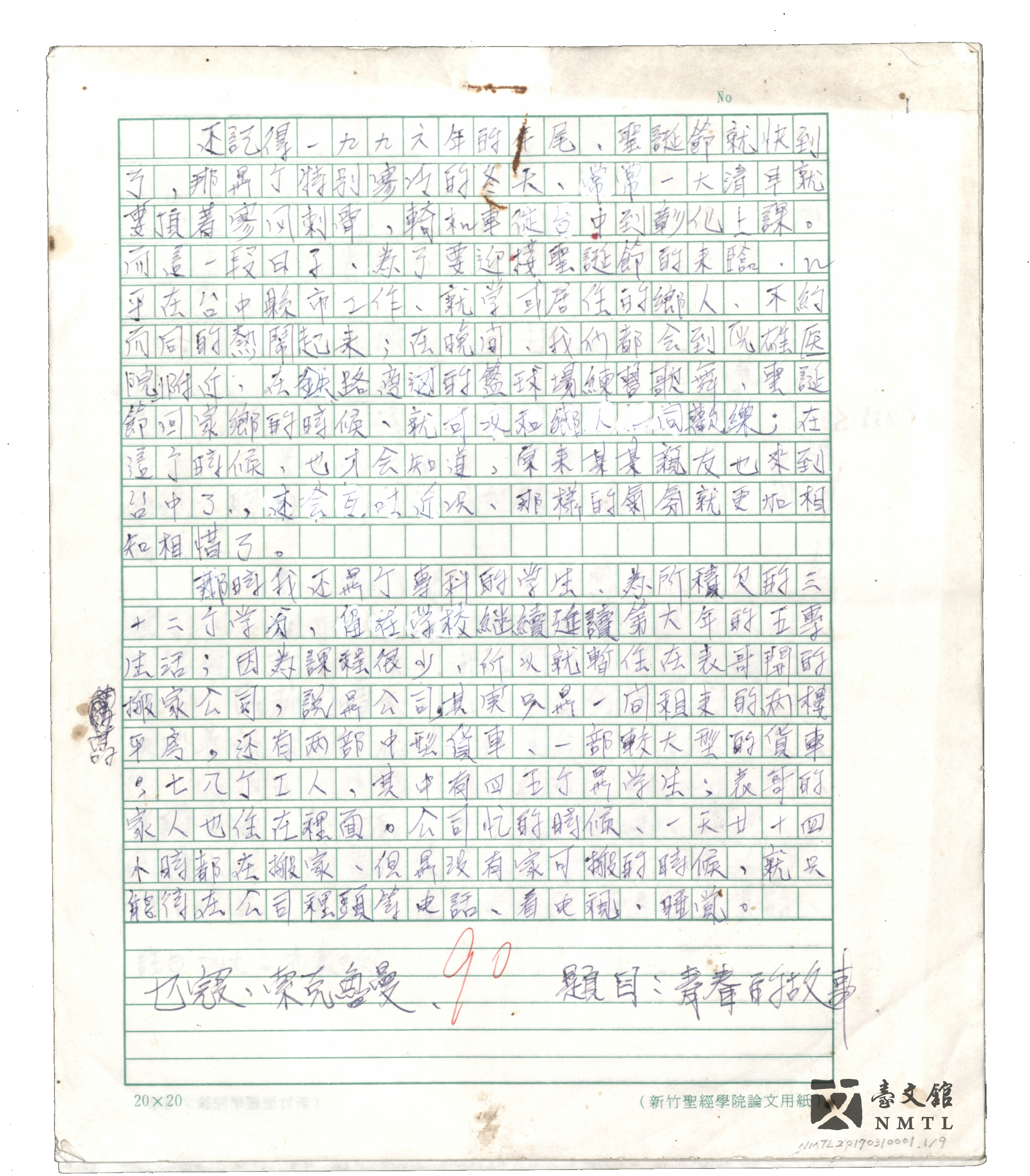 .
.
◈ Neqou Soqluman, "Story of Youth"
Neqou Soqluman, a Bunun native. His works center around the tribal life. He once worked as a mountain hiking docent. His works include magic realism LEGEND OF TONGKU SAVEQ, and picture book MY HUNTER GRANDPA— DAHAI BLACK BEAR. Manuscripts of earlier days.(Donated by Neqou Soqluman / Kept in National Museum of Taiwan Literature)
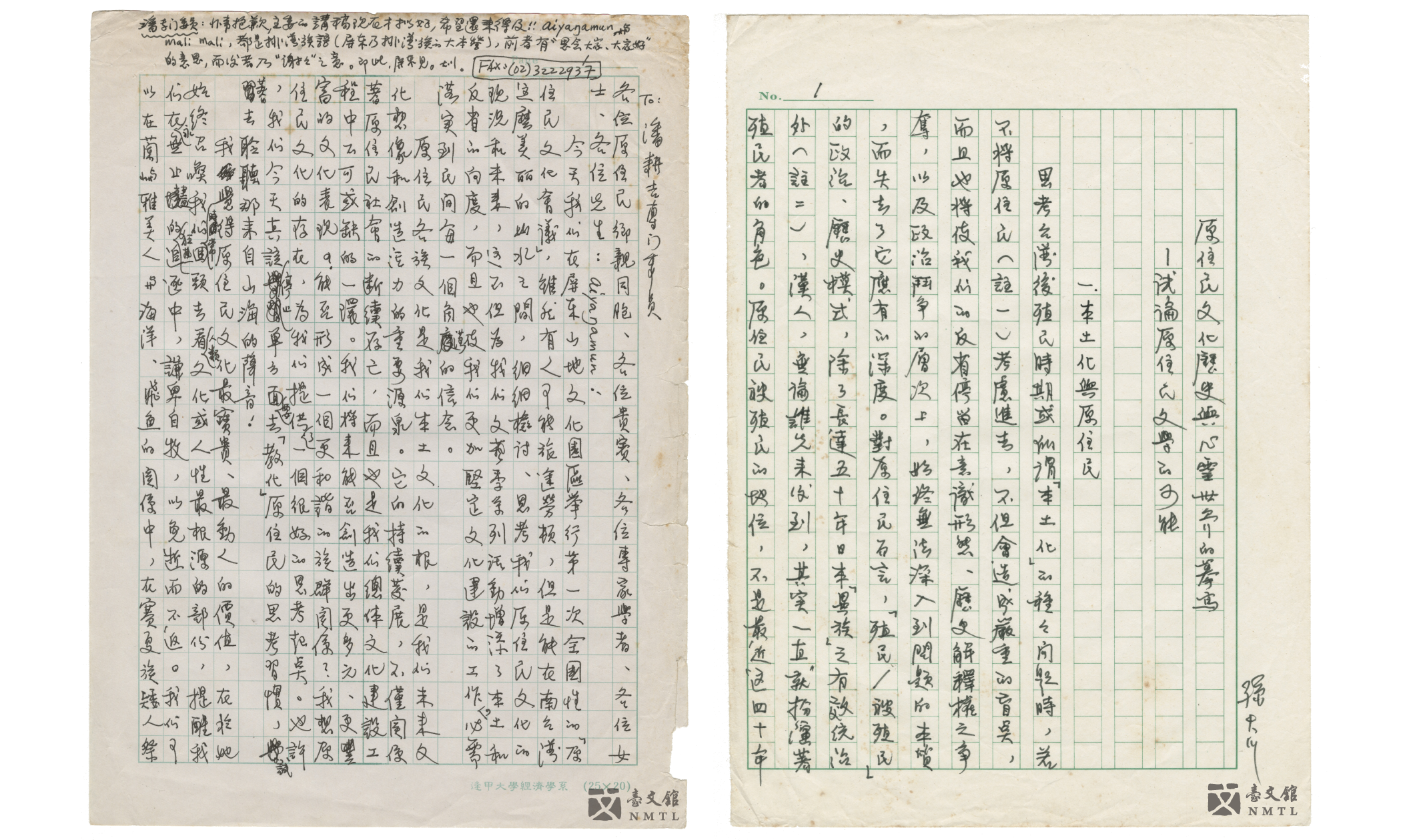
◈ Manuscripts and photocopied documents of Paelabang Danapan
Paelabang Danapan, a Puyuma native. It is a speech manuscript for Shen Hsueh-yung, Chair of Council for Cultural planning and Development.The word "Original Residents of Taiwan" is used throughout the entire manuscript. The speech was given by the then President Lee Teng-hui on April 10th at the "Cultural Conference for Indigenous Peoples" held by Council for Cultural planning and Development. It was the first time the head of state of Taiwan used the term "Original Residents of Taiwan."(Provided by Paelabang Danapan)
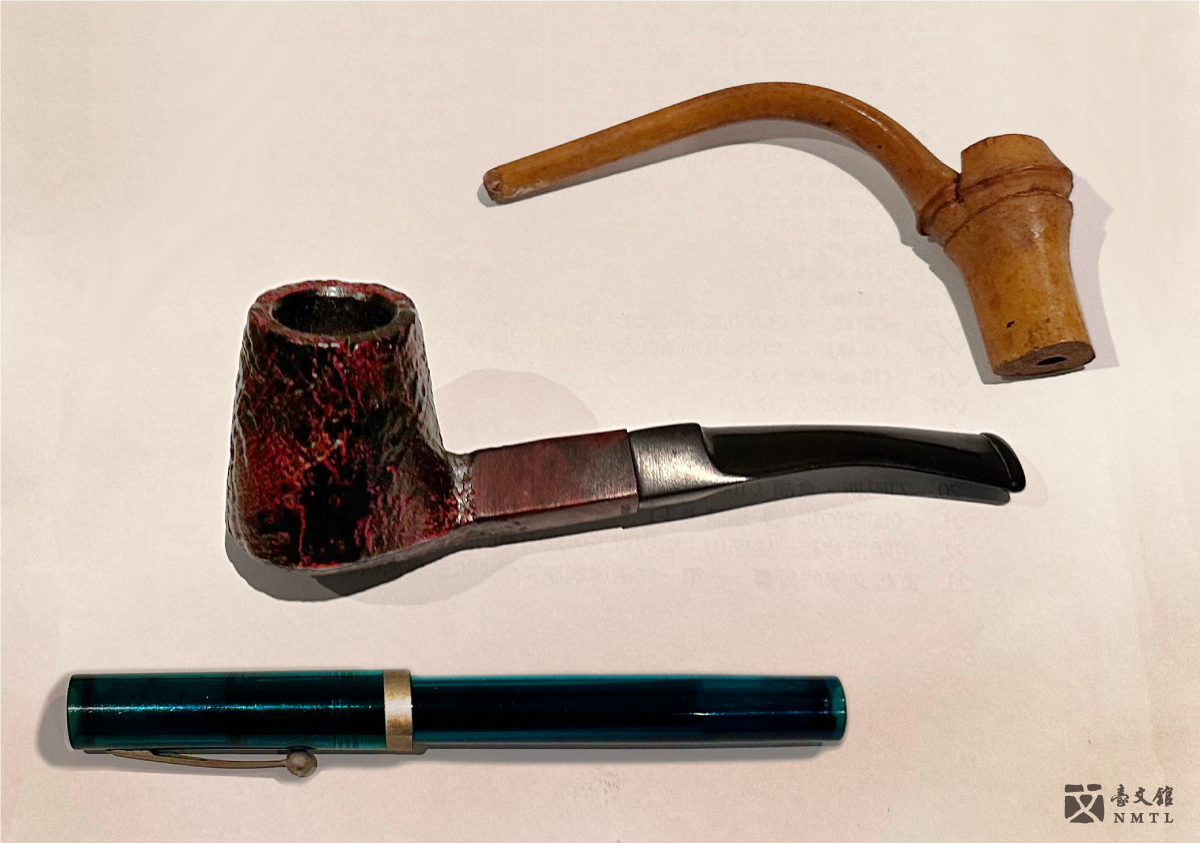
◈ Things belonging to Paelabang Danapan
The tobacco pipe used by Paelabang Danapan when he studied in Belgium; the fountain pen he usually used to write; the old folding fan has the calligraphy he inscribed when he acted as the vice director of Control Yuan.(Provided by Paelabang Danapan)
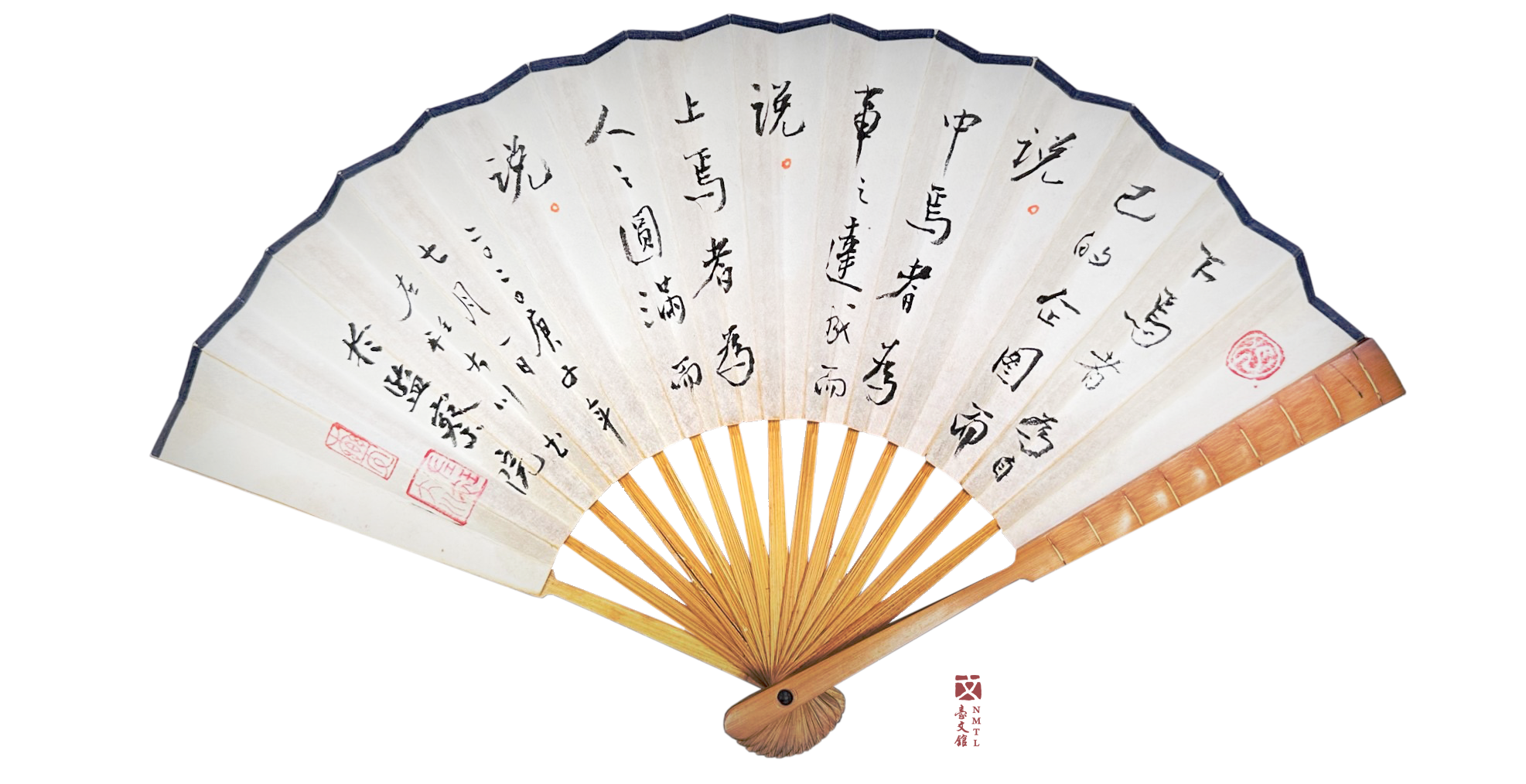
◈ Calligraphy on Folding Fan
The folding fan has the calligraphy done during his time serving as the vice director of Control Yuan.(Provided by Paelabang Danapan)
◇◆◇◆◇◆◇◆ ◇◆◇◆◇◆◇◆
Supported by Indigenous Literature Awards
The government and the literary scene have long held indigenous literature awards, organized literature camps/forums, and arranged international seminars. For the past 30 years, there have been outstanding and a wide array of literary works including long novels, prose, reportage literature, and poems.
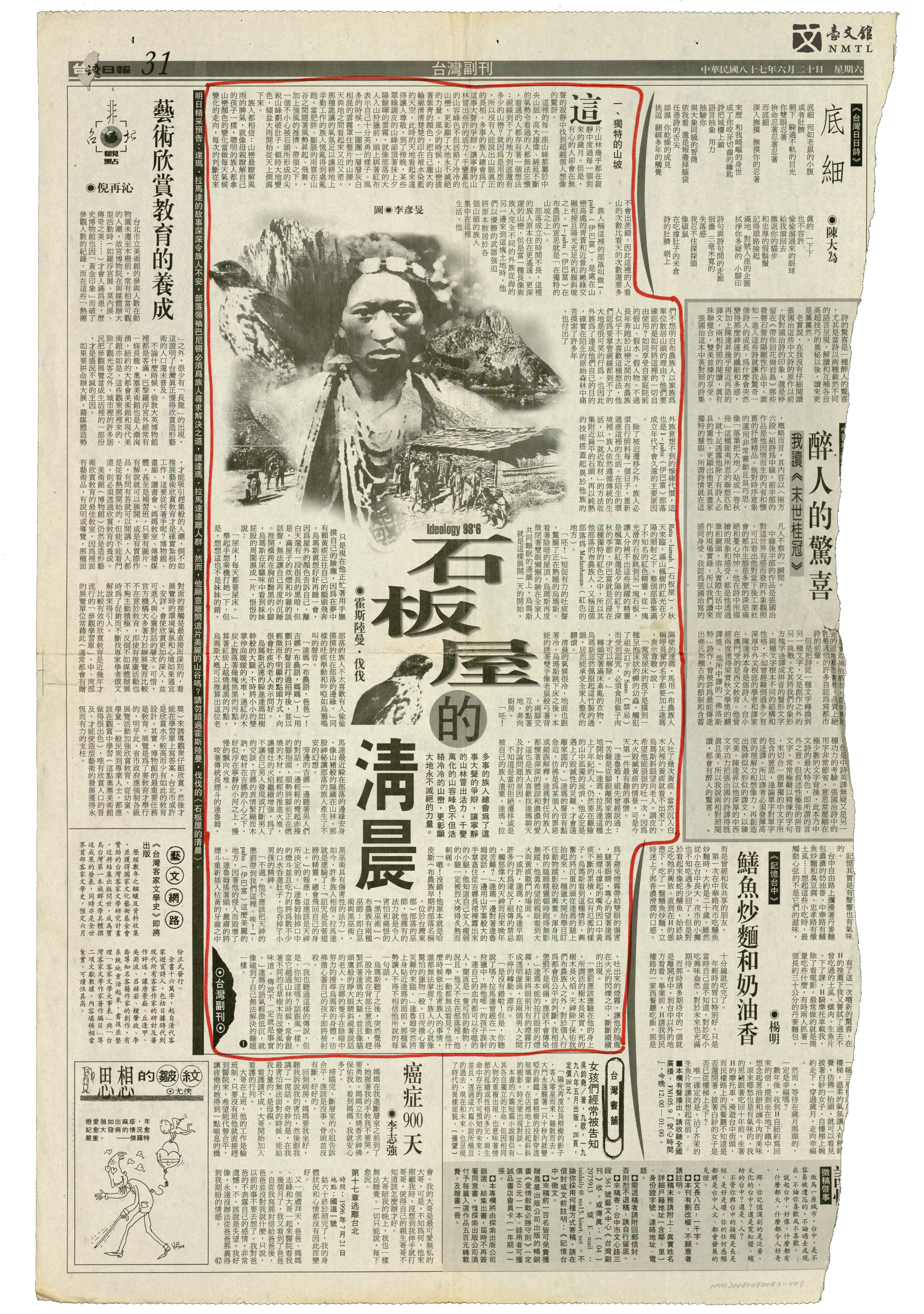
◈ "Morning in A Stone House" TAIWAN DAILY NEWS
Husluman Vava, a Bunun native. News clippings of his works.(Donated by Husluman Vava / Kept in National Museum of Taiwan Literature)
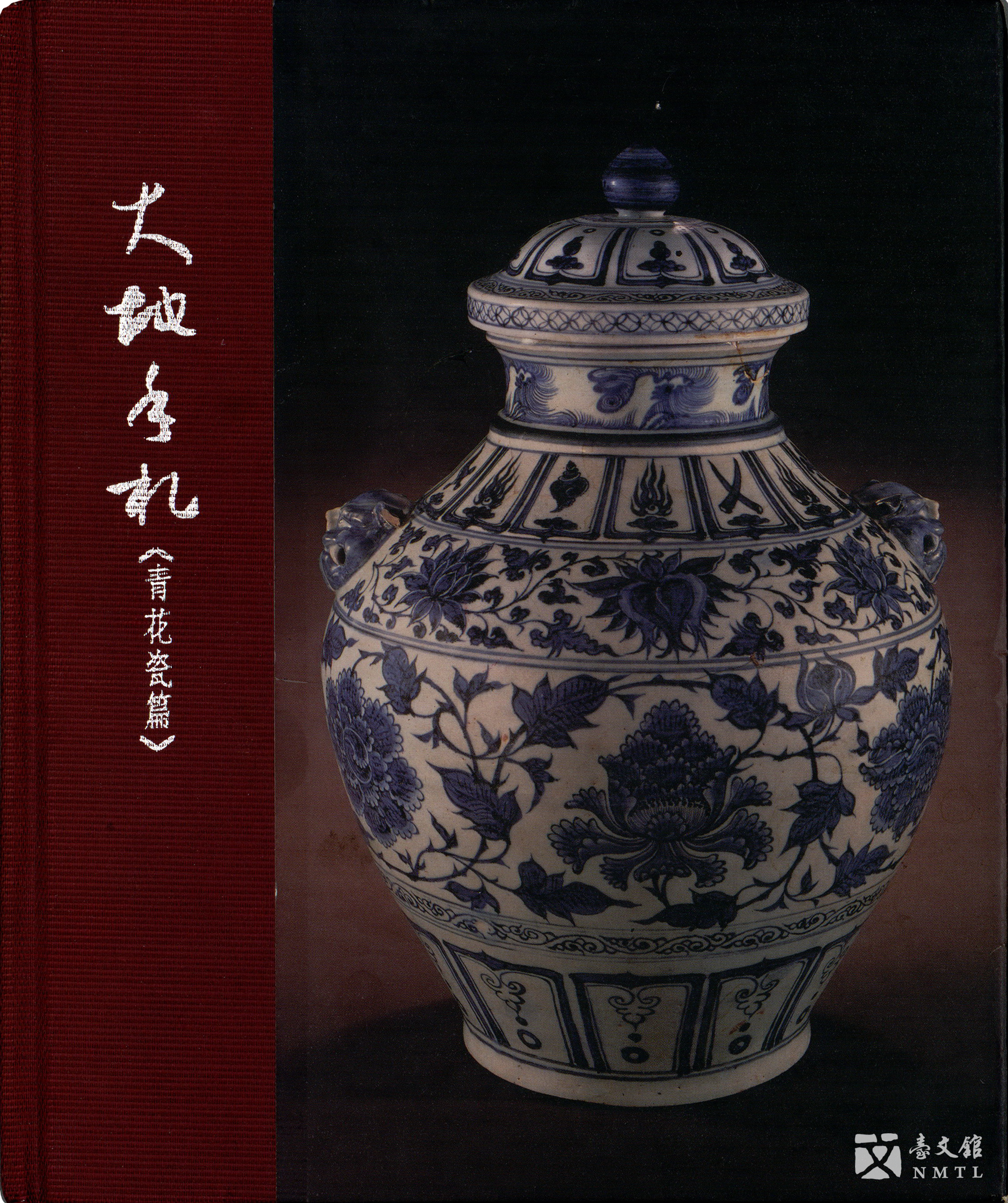
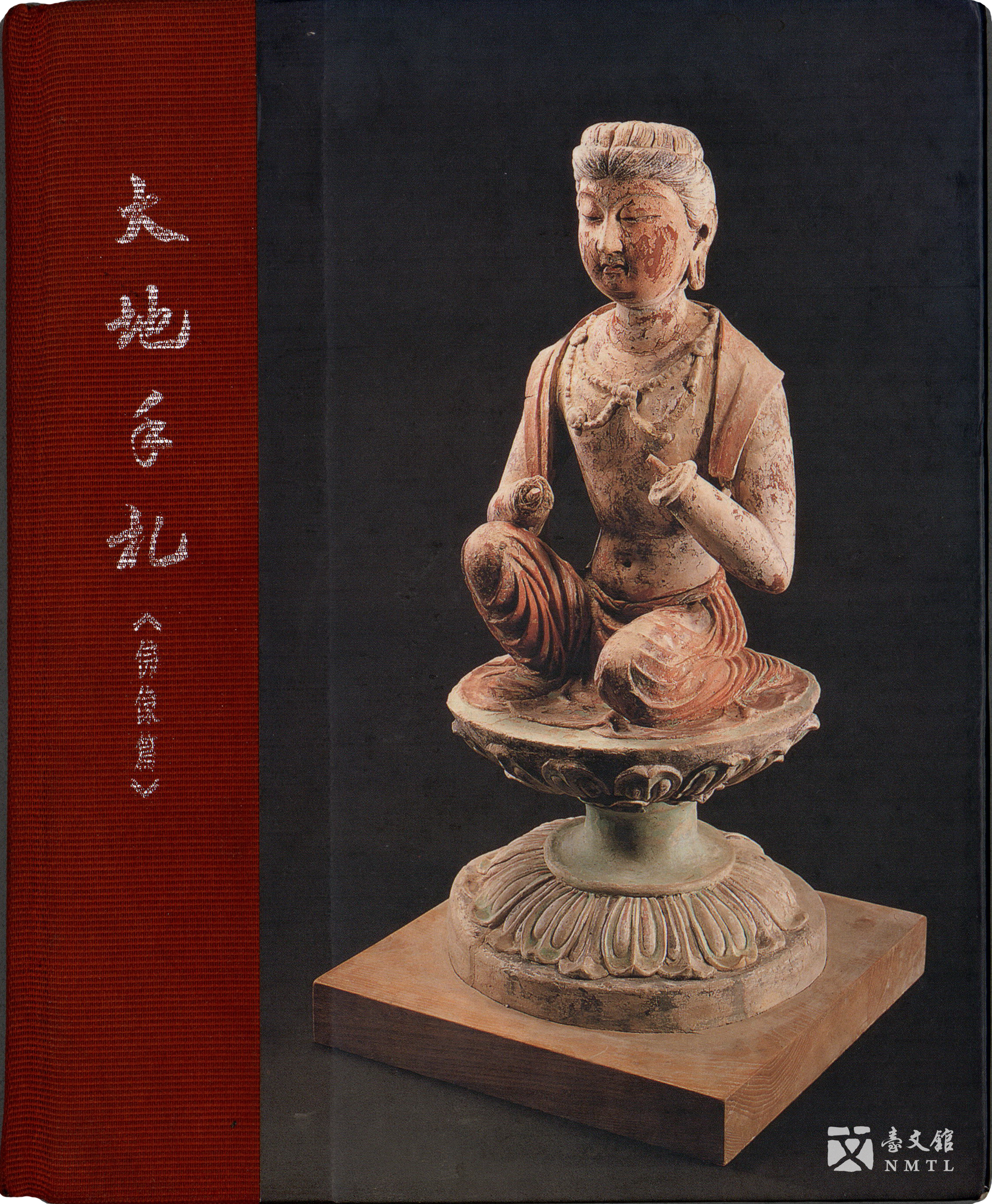
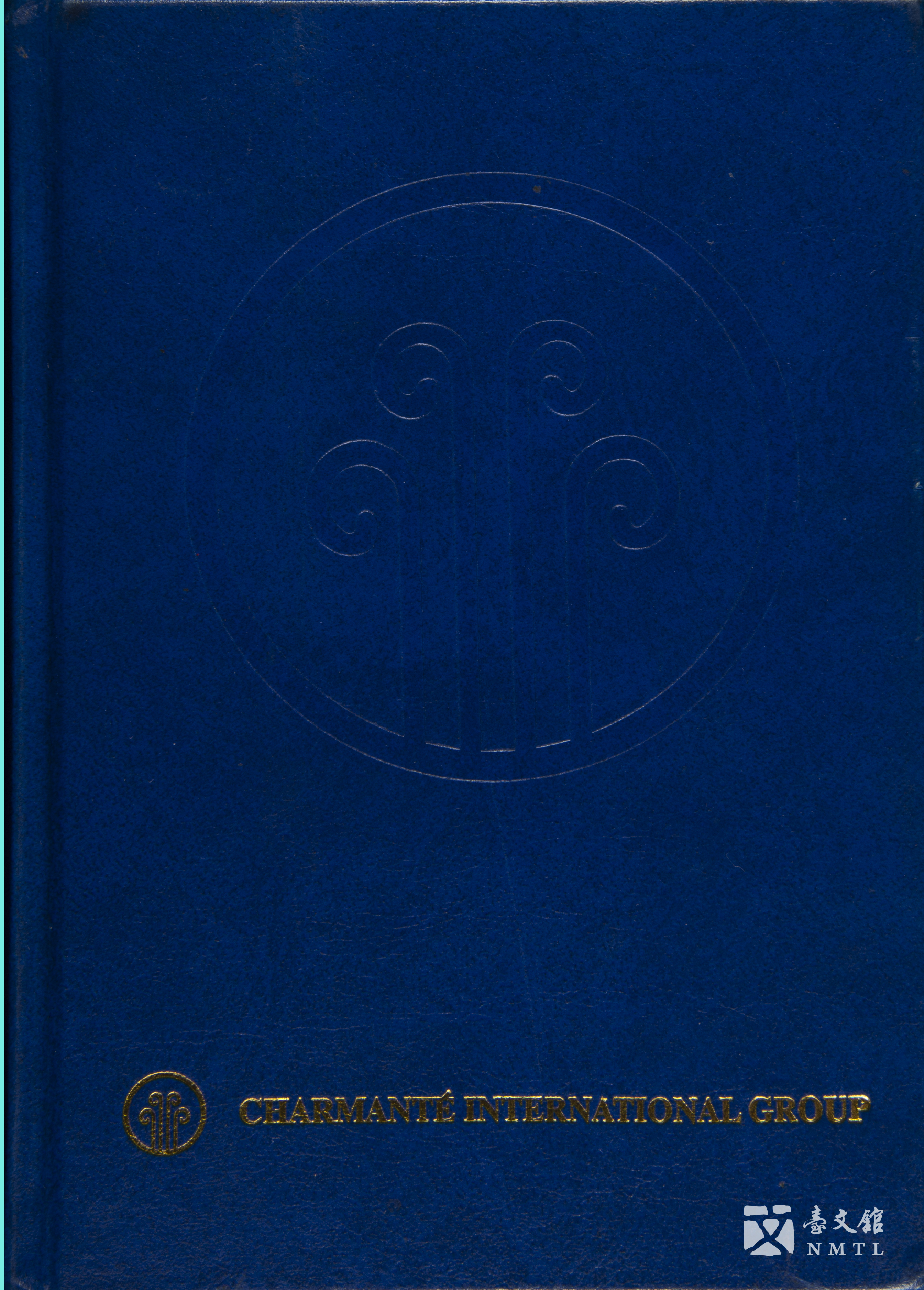
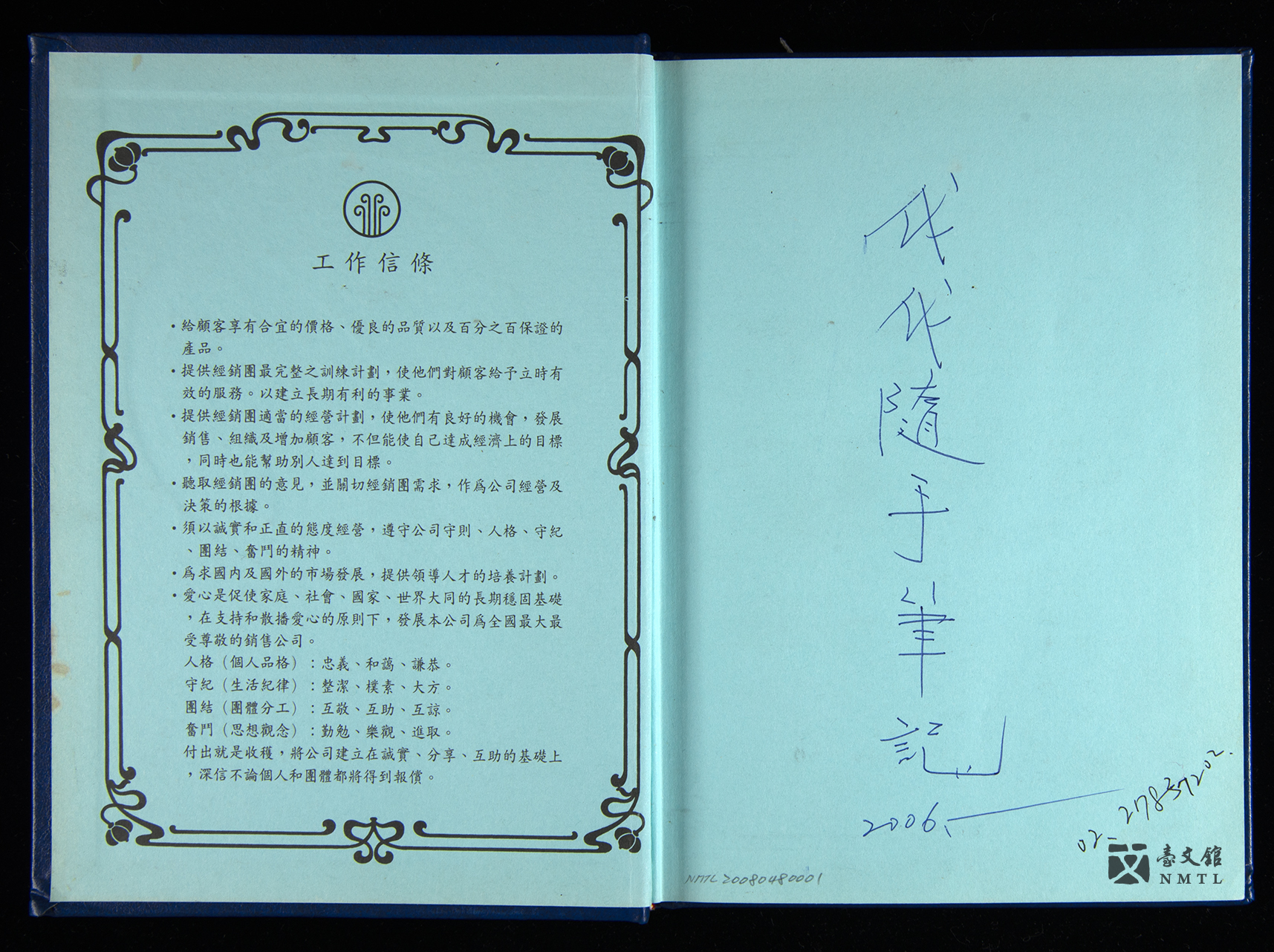
◈ Notebook (Notebook on The World— Blue and White Porcelain); Notebook (Notebook on The World—Buddha Statues); Notes by Husluman Vava
Husluman Vava's notebooks for writing inspiration.(Donated by Husluman Vava's family / Kept in National Museum of Taiwan Literature)
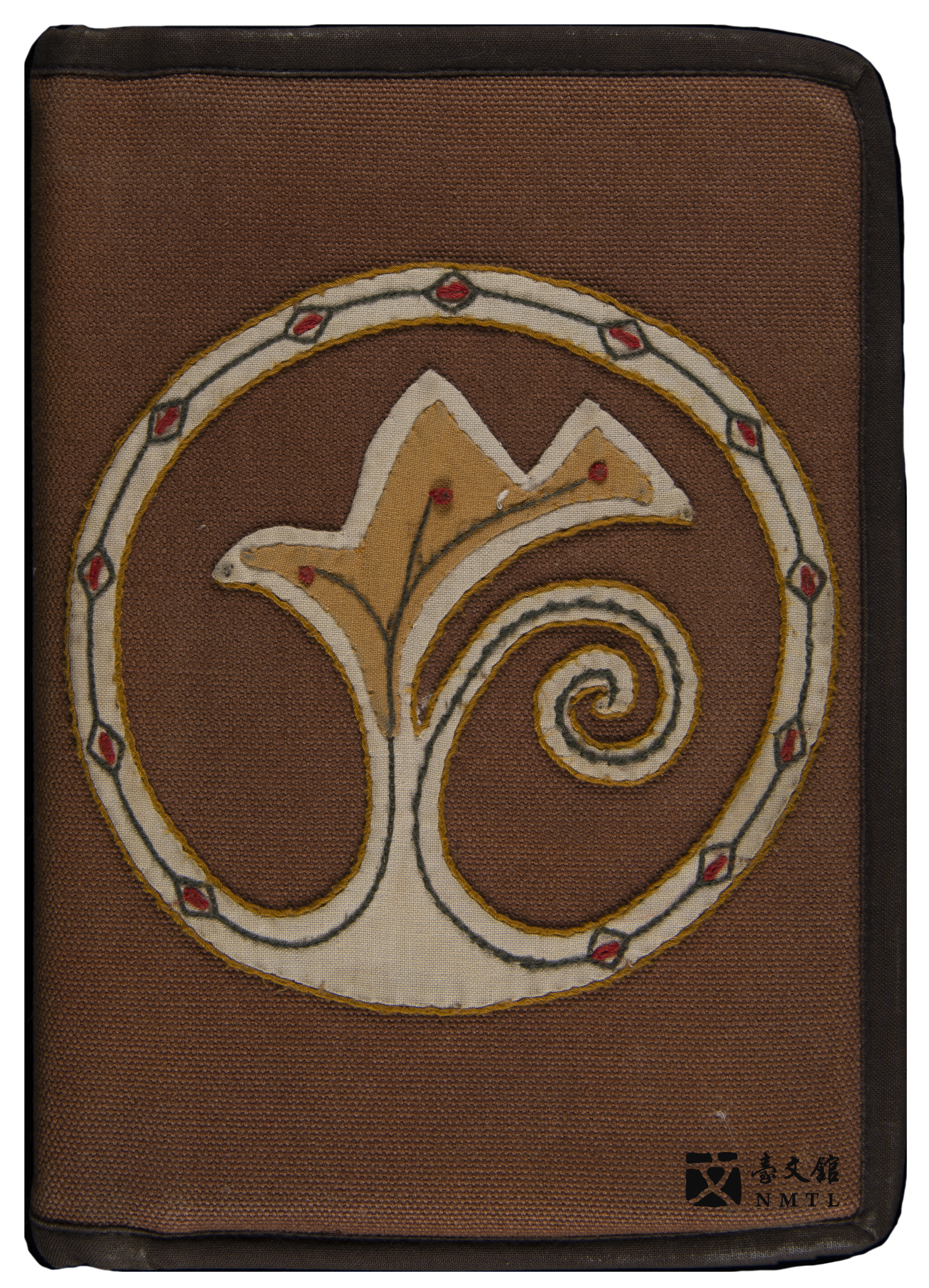
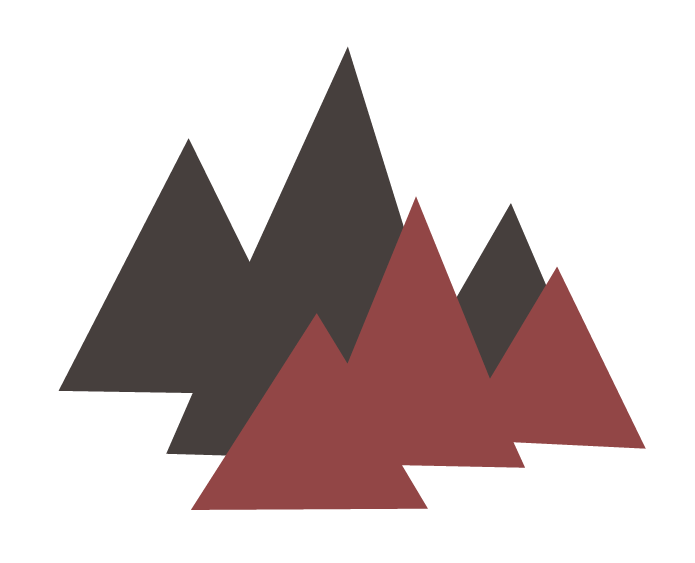
◈ Husluman Vava, Notebook in 2007
Notebook cover of indigenous style made by Husluman Vava for his wife.(Donated by Husluman Vava / Kept in National Museum of Taiwan Literature)
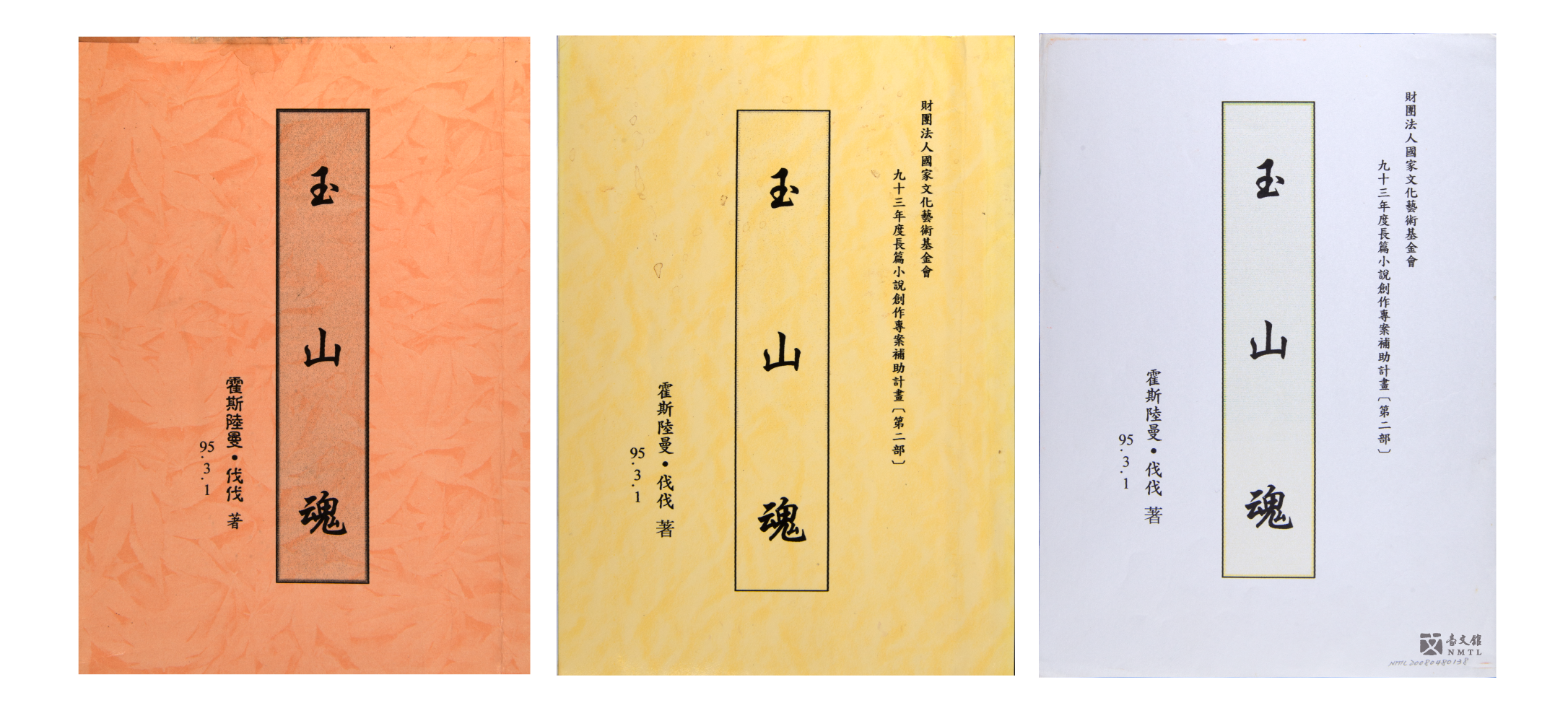
◈THE SPIRIT OF YUSHAN; Photocopy of THE SPIRIT OF YUSHAN (second volume); Writing Proposal of THE SPIRIT OF YUSHAN and Application Document
Husluman Vava's representative long novel THE SPIRIT OF YUSHAN illustrates the growth of Bunun young man and the tribal life of indigenous people coexisting with mountains. Radio Taiwan International once made it into a radio drama.(Donated by Husluman Vava / Kept in National Museum of Taiwan Literature)
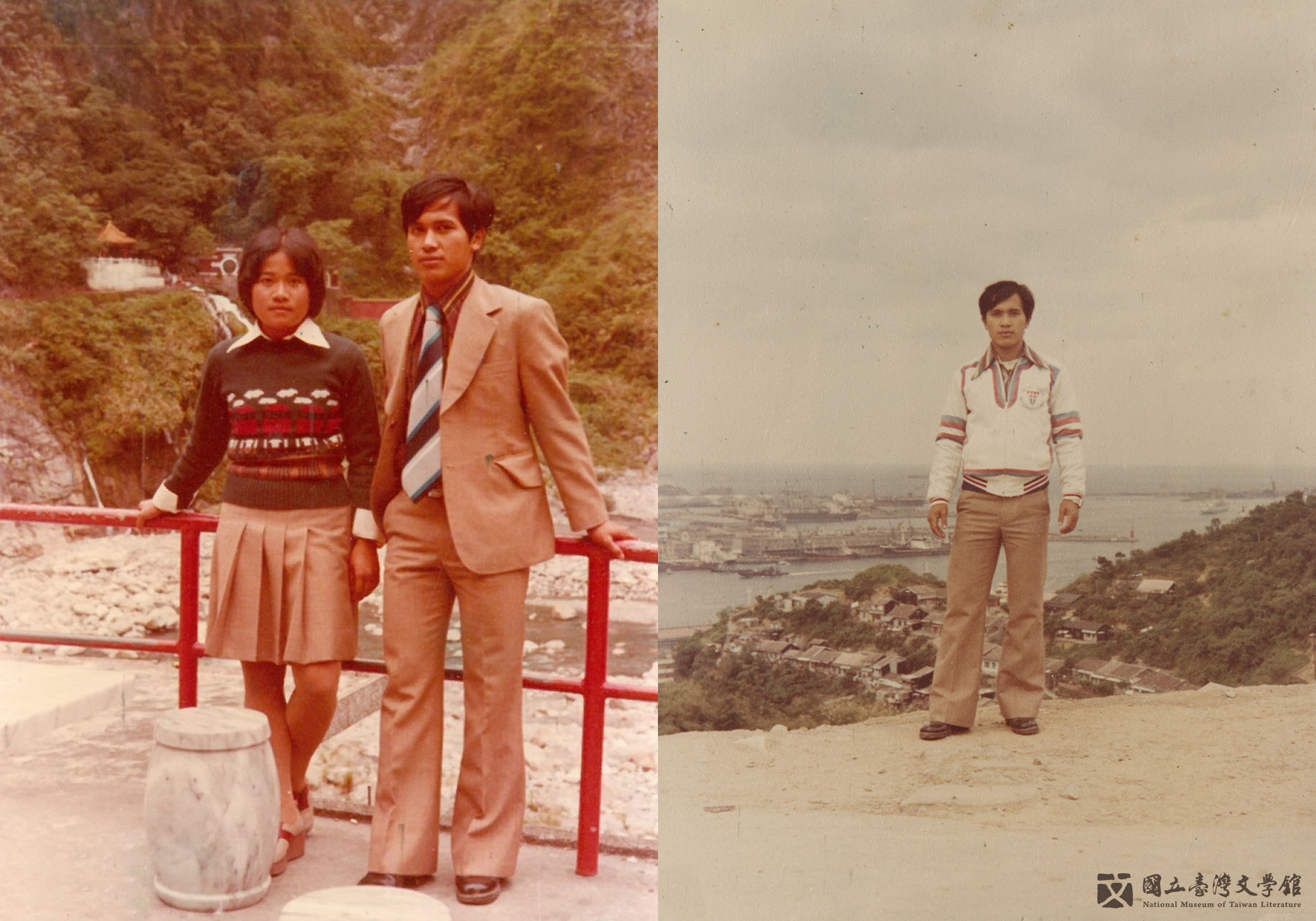
◈ Photo of Husluman Vava and his wife; Photos of Husluman Vava during different periods
Husluman Vava, who loves to joke, pursued his classmate Pan Tzu-chin, a Paiwan native, when he was studying at the Teacher's College. This is a photo of them together during the graduation trip.(Donated by Husluman Vava's family / Kept in National Museum of Taiwan Literature)
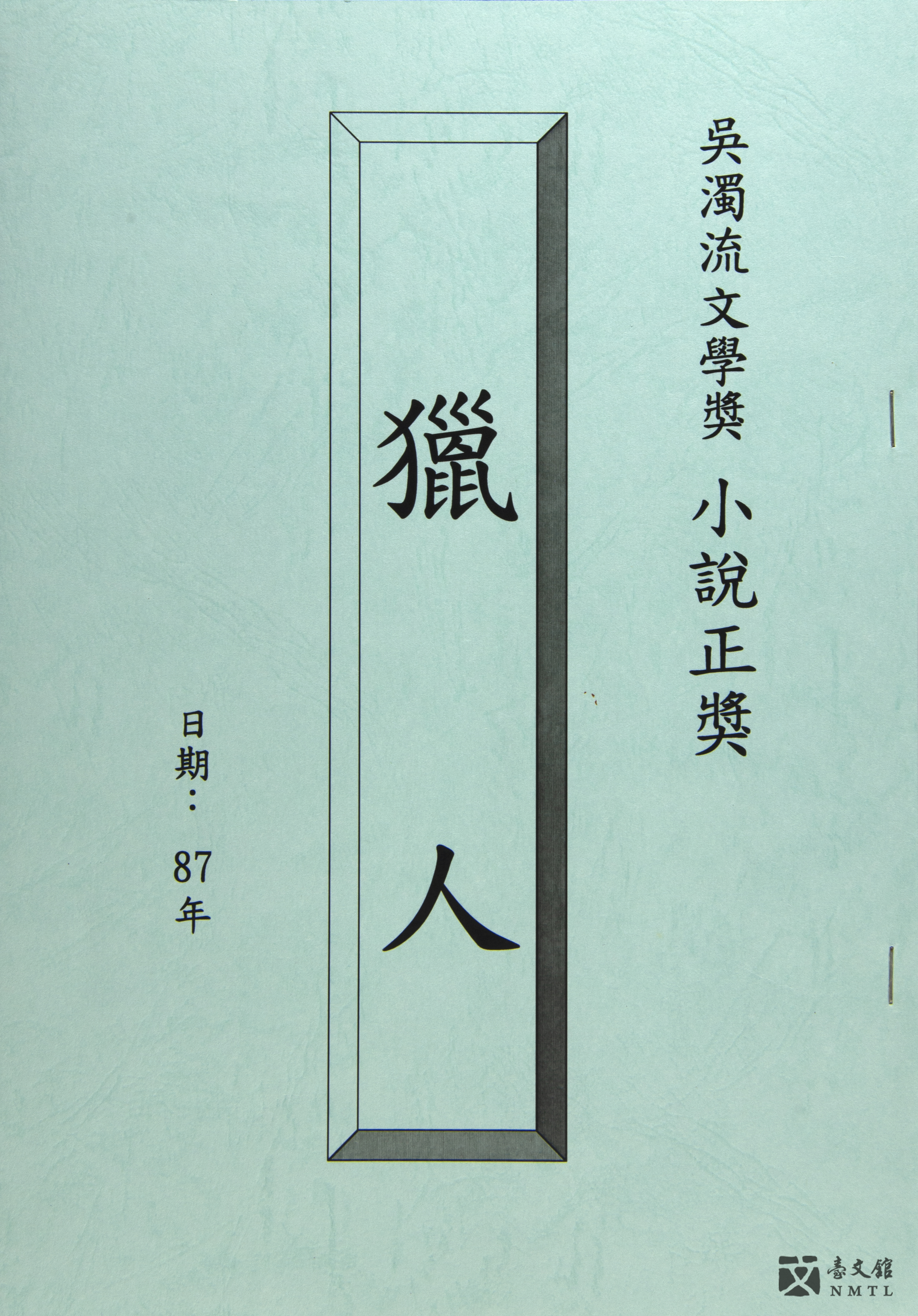
◈ Amended Manuscript of HUNTER
Amended manuscript of Husluman Vava's work. (Donated by Husluman Vava's family / Kept in National Museum of Taiwan Literature)
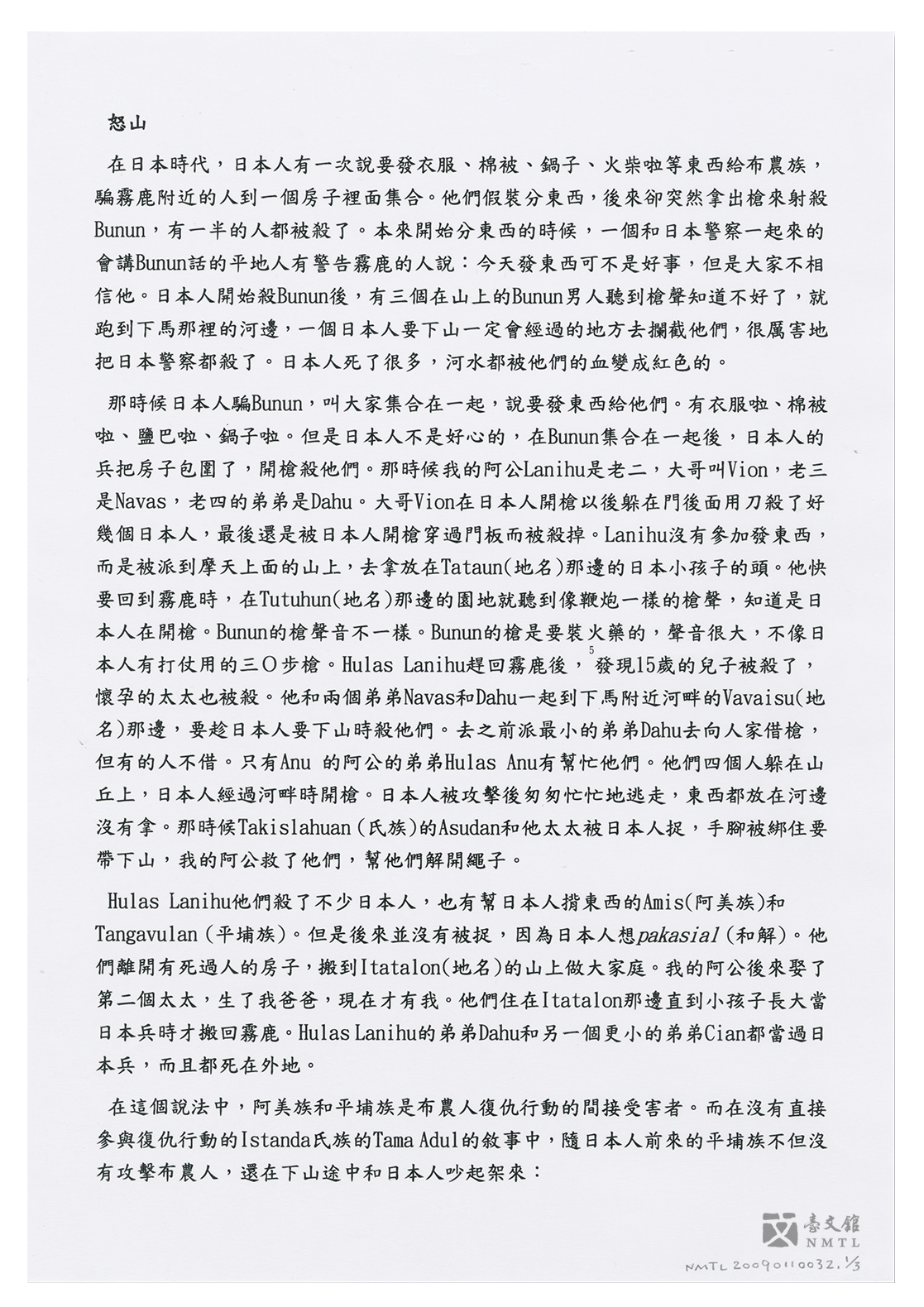
◈ Photocopy of MOUNTAIN OF INDIGNATION
Proposal of Husluman Vava's unfinished long novel MOUNTAIN OF INDIGNATION.(Donated by Husluman Vava's family / Kept in National Museum of Taiwan Literature)
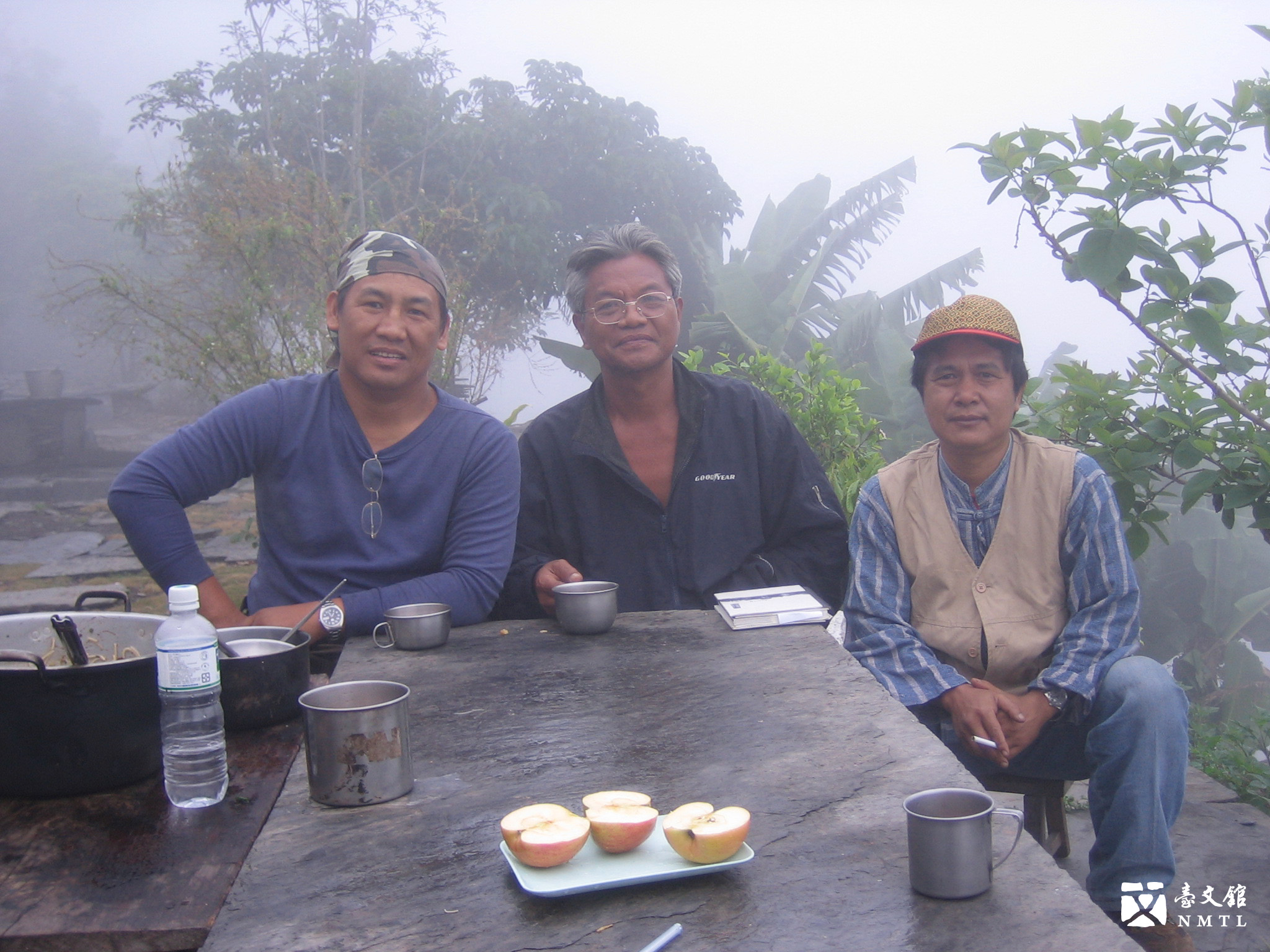
◈ Photo of Husluman Vava, Auvini Kadresengan and Badai
Badai (left), Auvini Kadresengan, and Husluman Vava gathered at the literature meeting in front of the stone house in Kucapungane.(Donated by Husluman Vava / Kept in National Museum of Taiwan Literature)
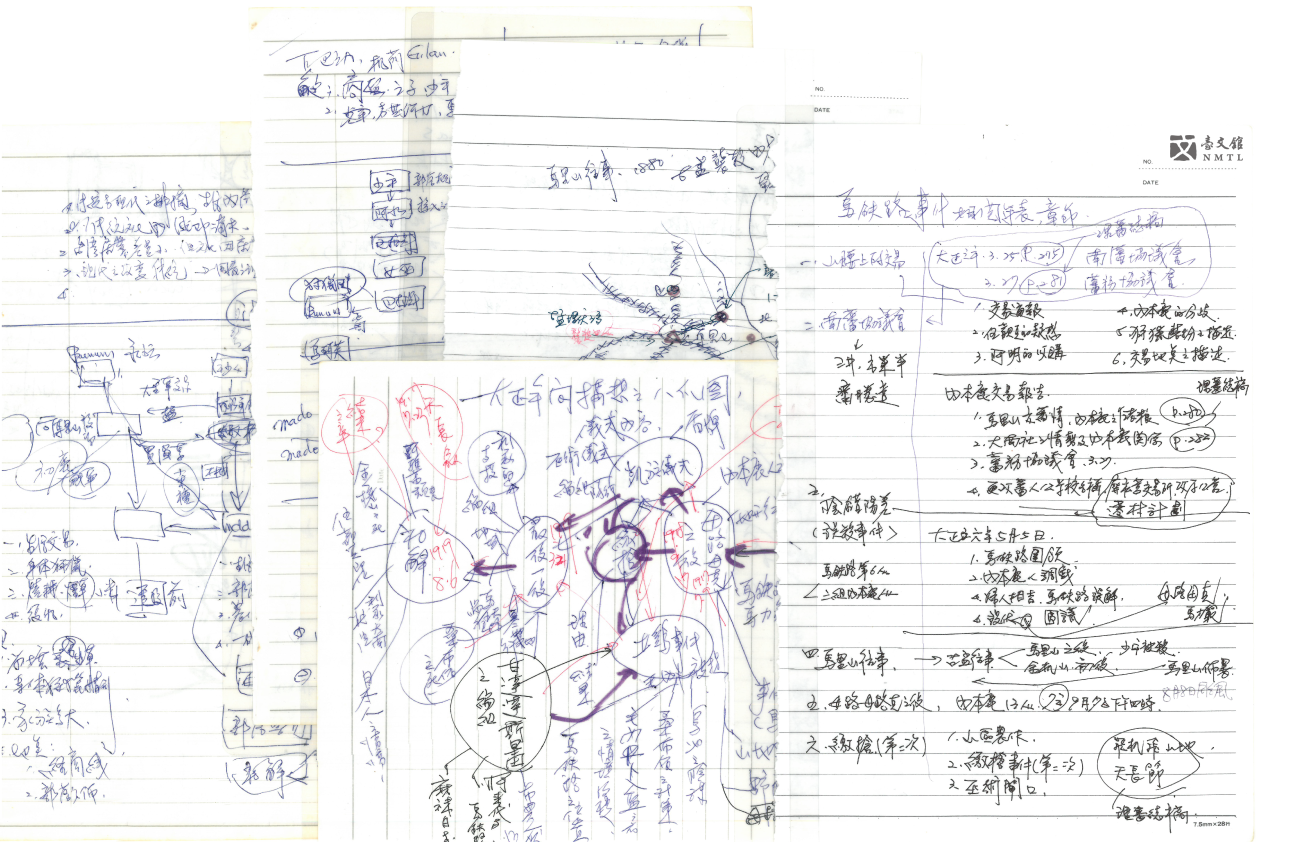
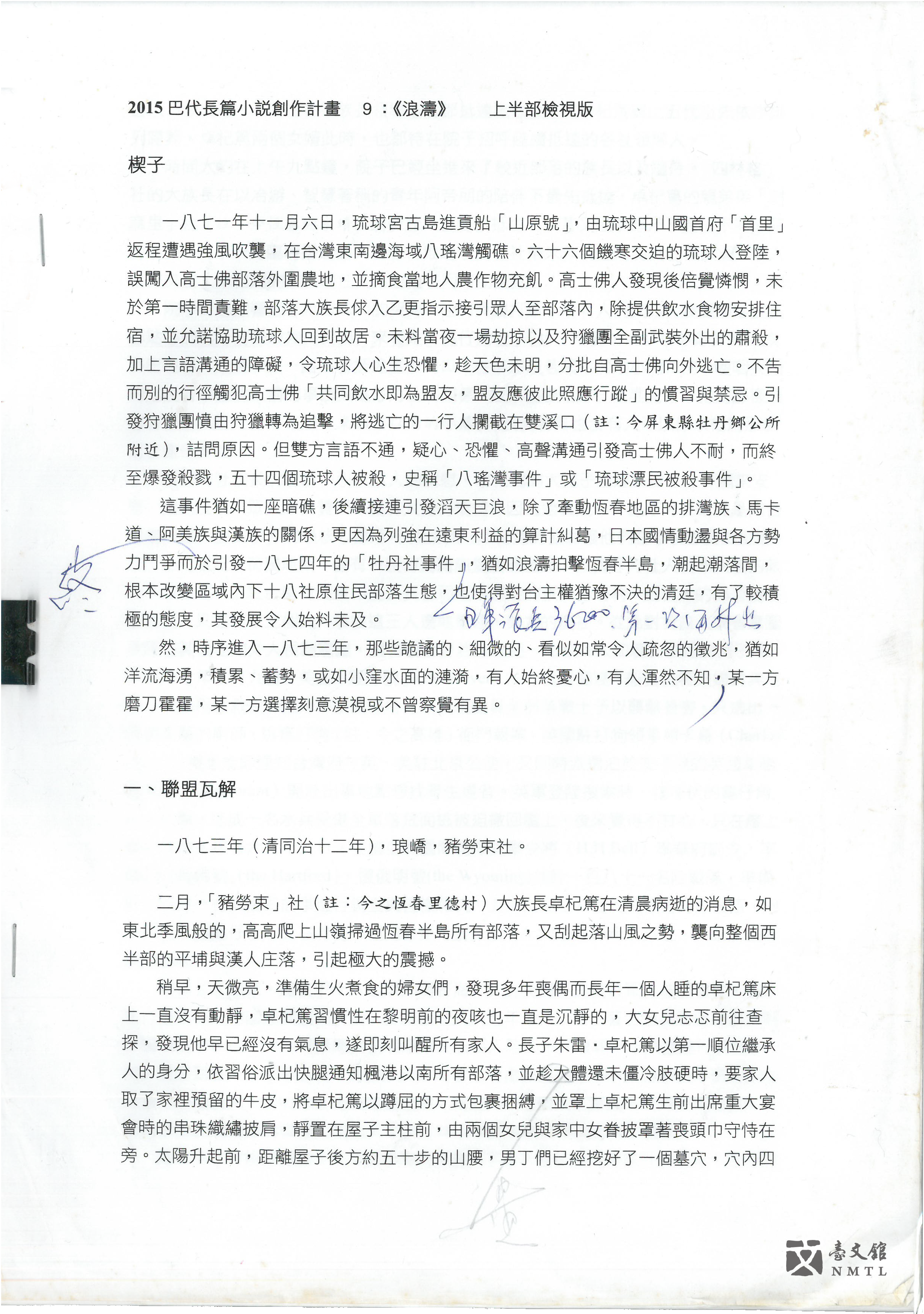
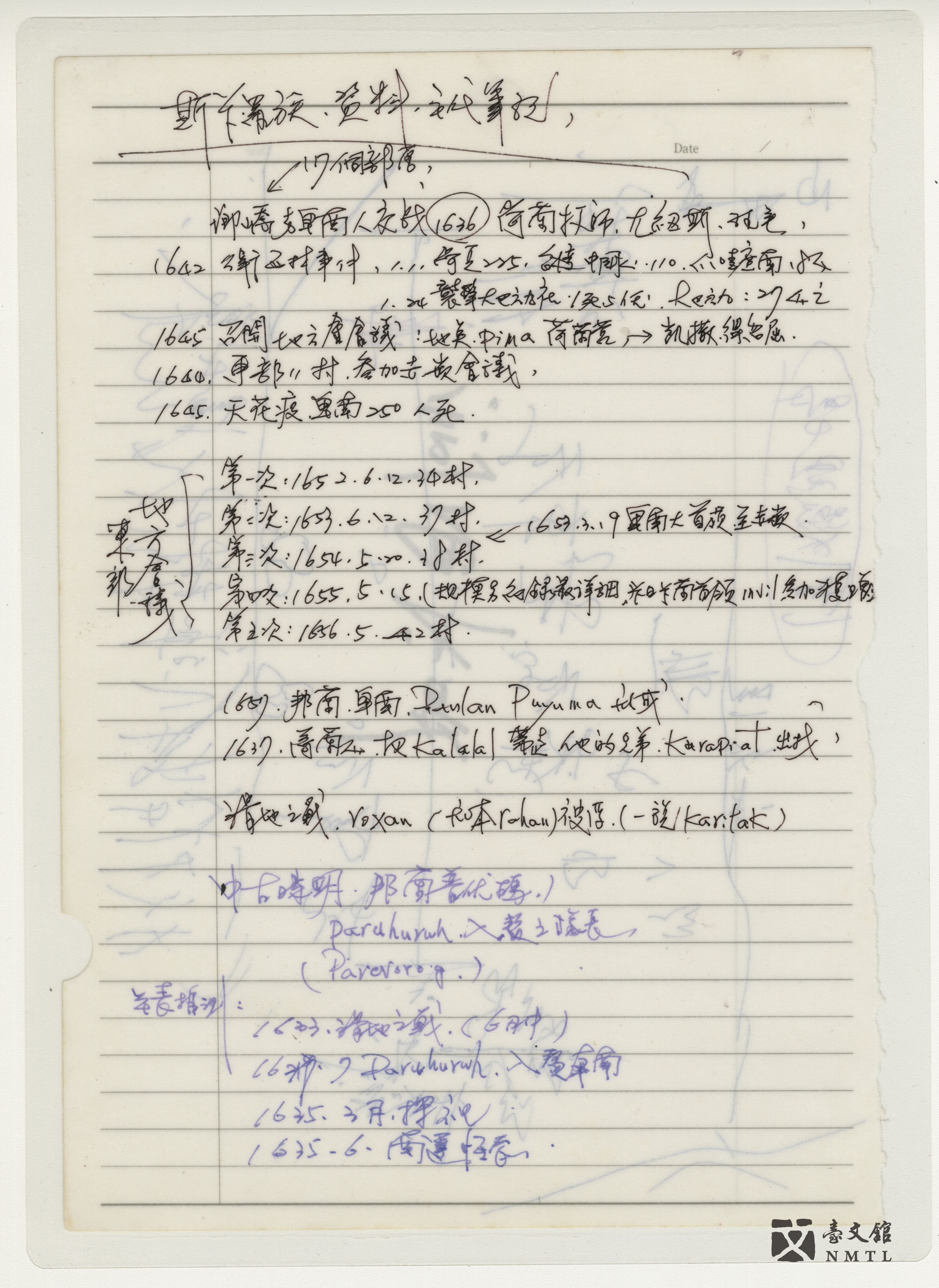
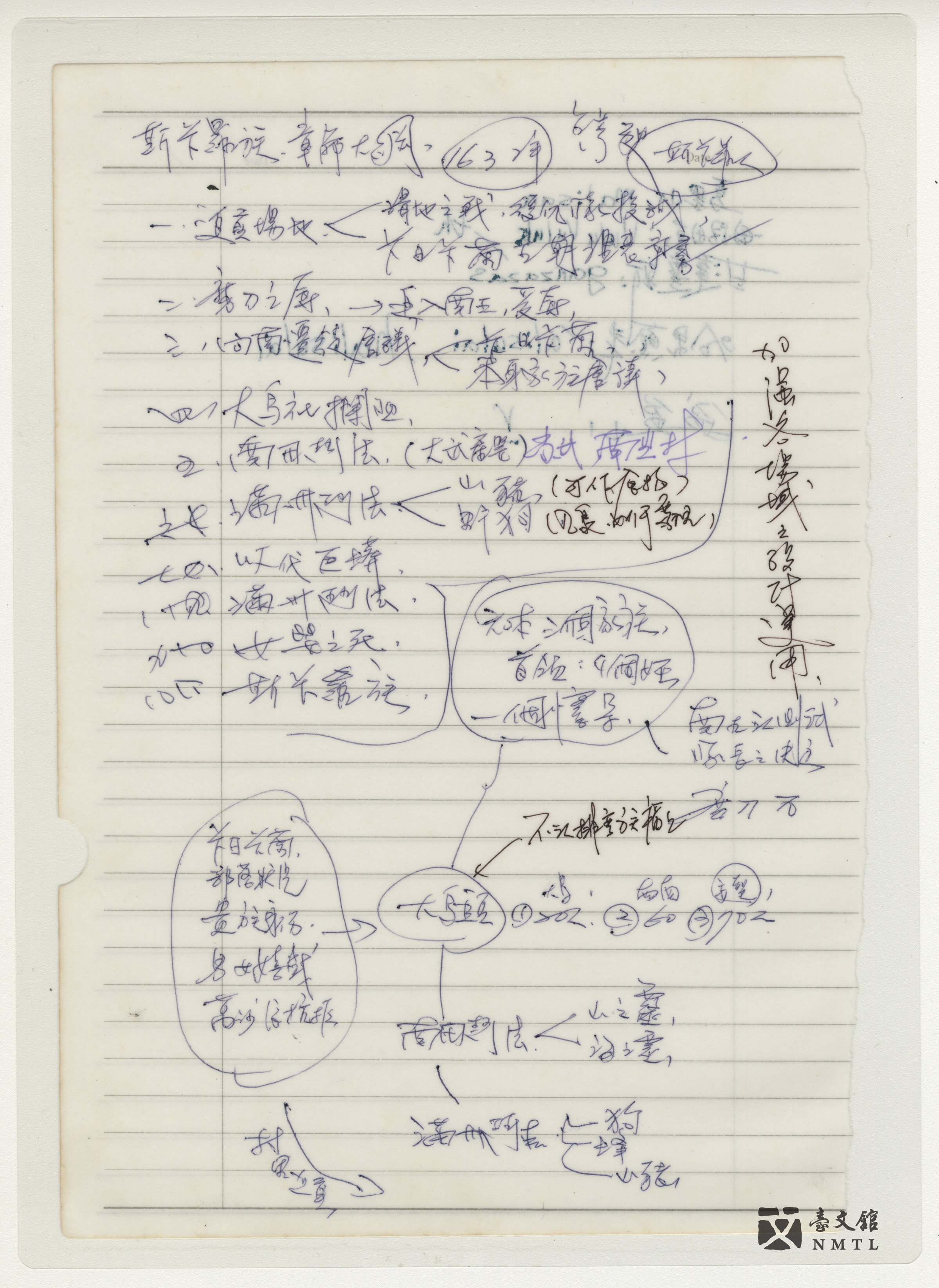
◈ TIDES (Proposal of Badai's long novel in 2015 ); MATERU Incident; Chapter Overview of SEQALU
Badai's notes of writing inspiration for TIDES, WARRIOR MATERU, and SEQALU(Provided by Badai)
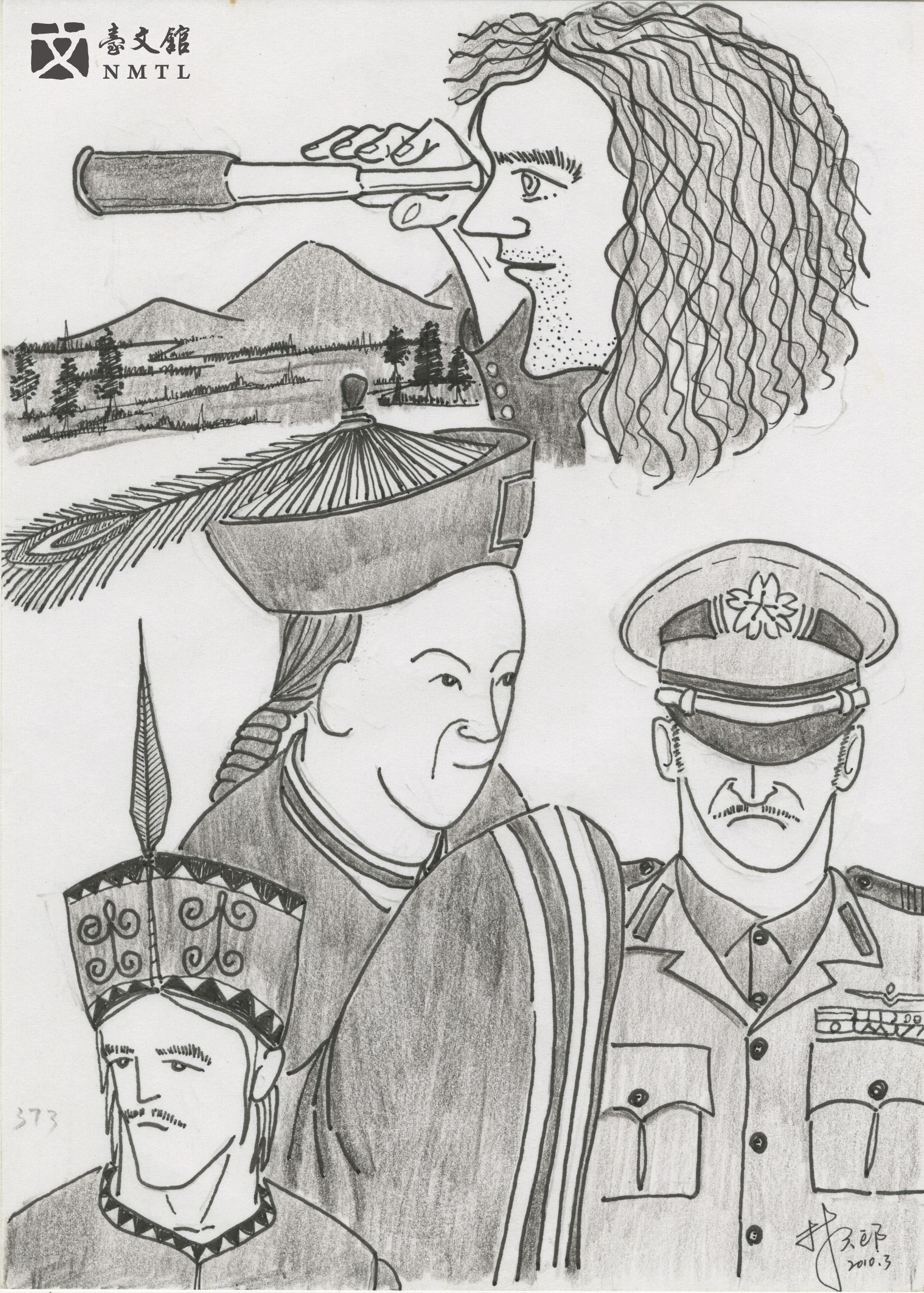
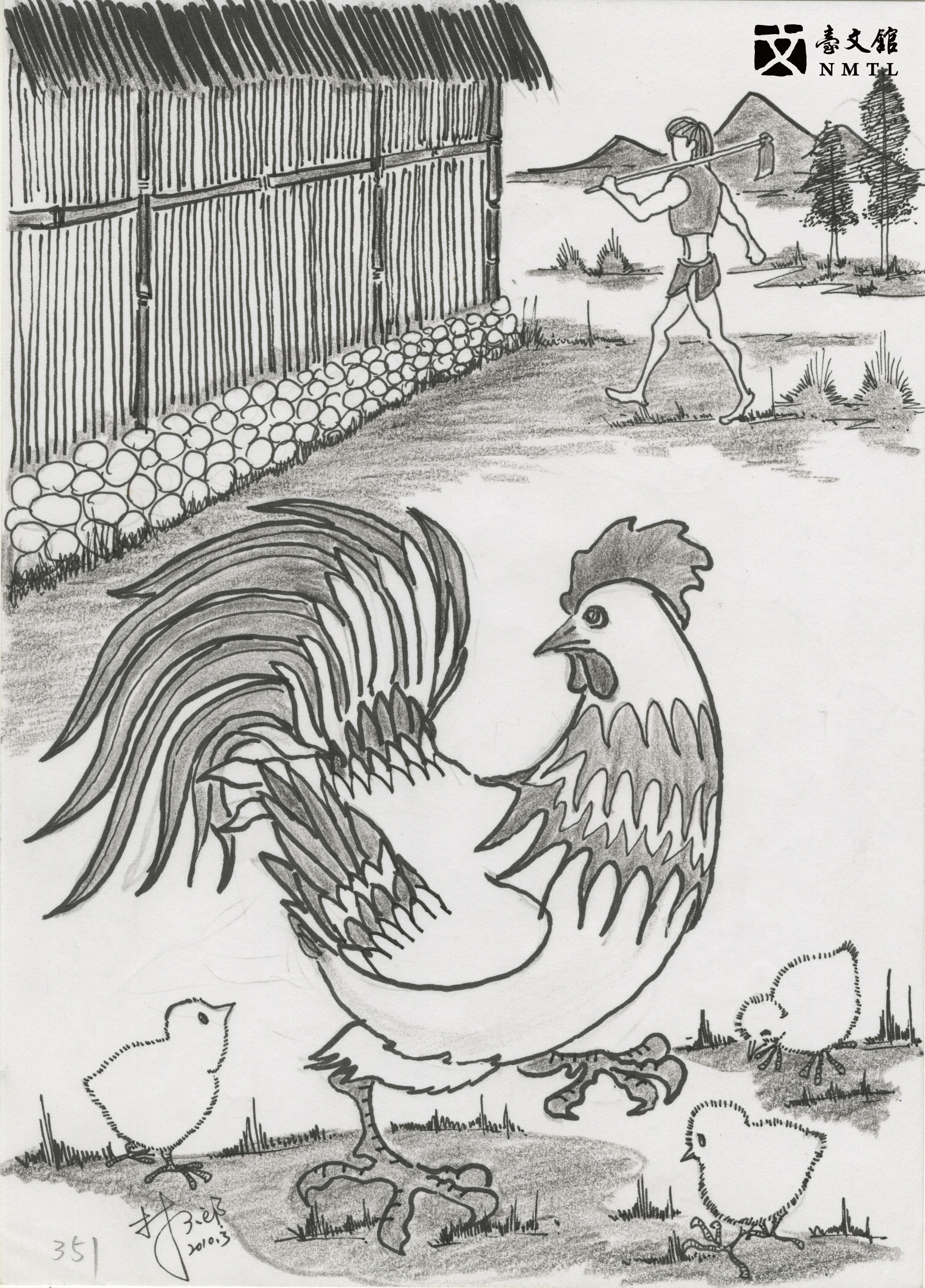
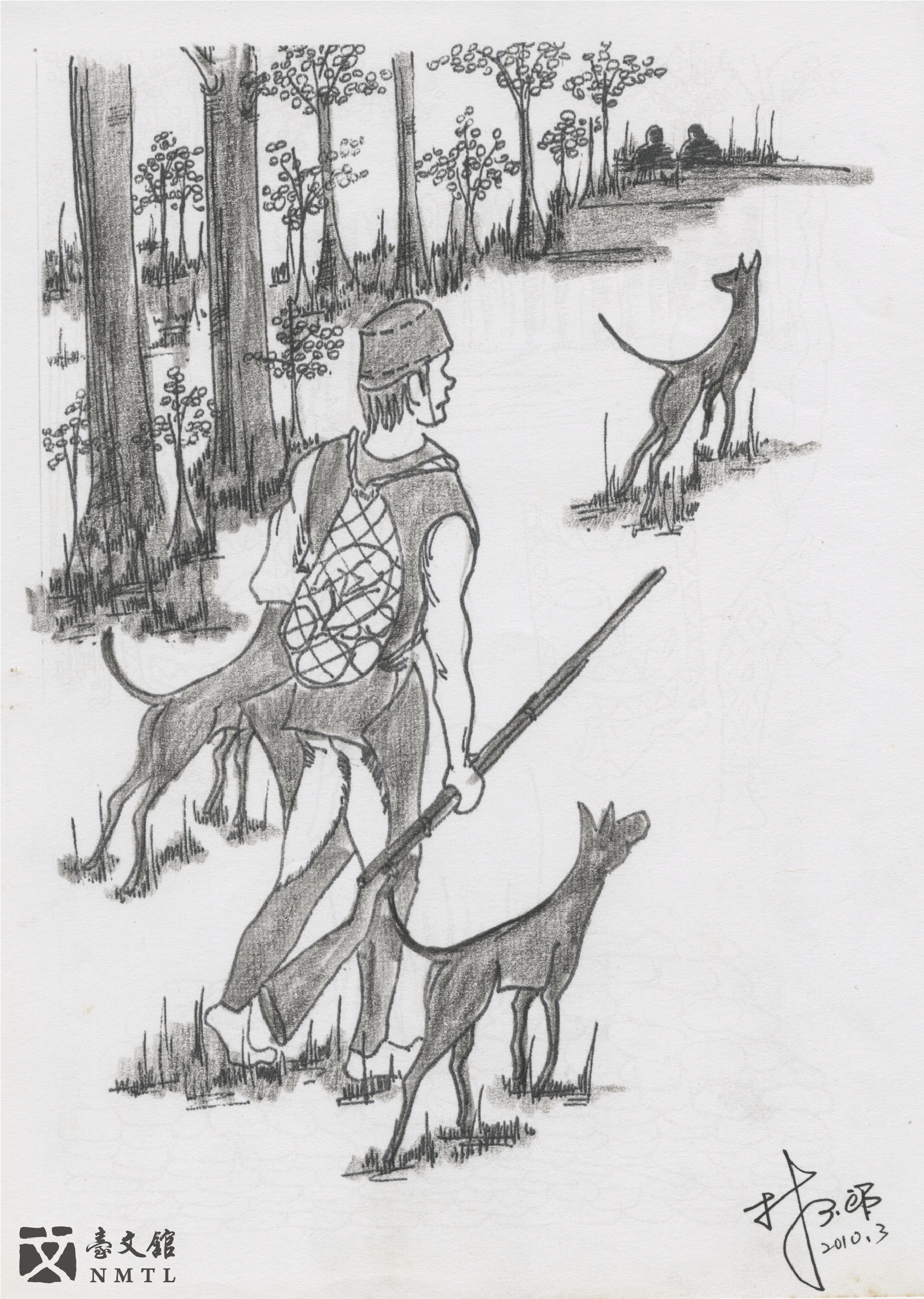
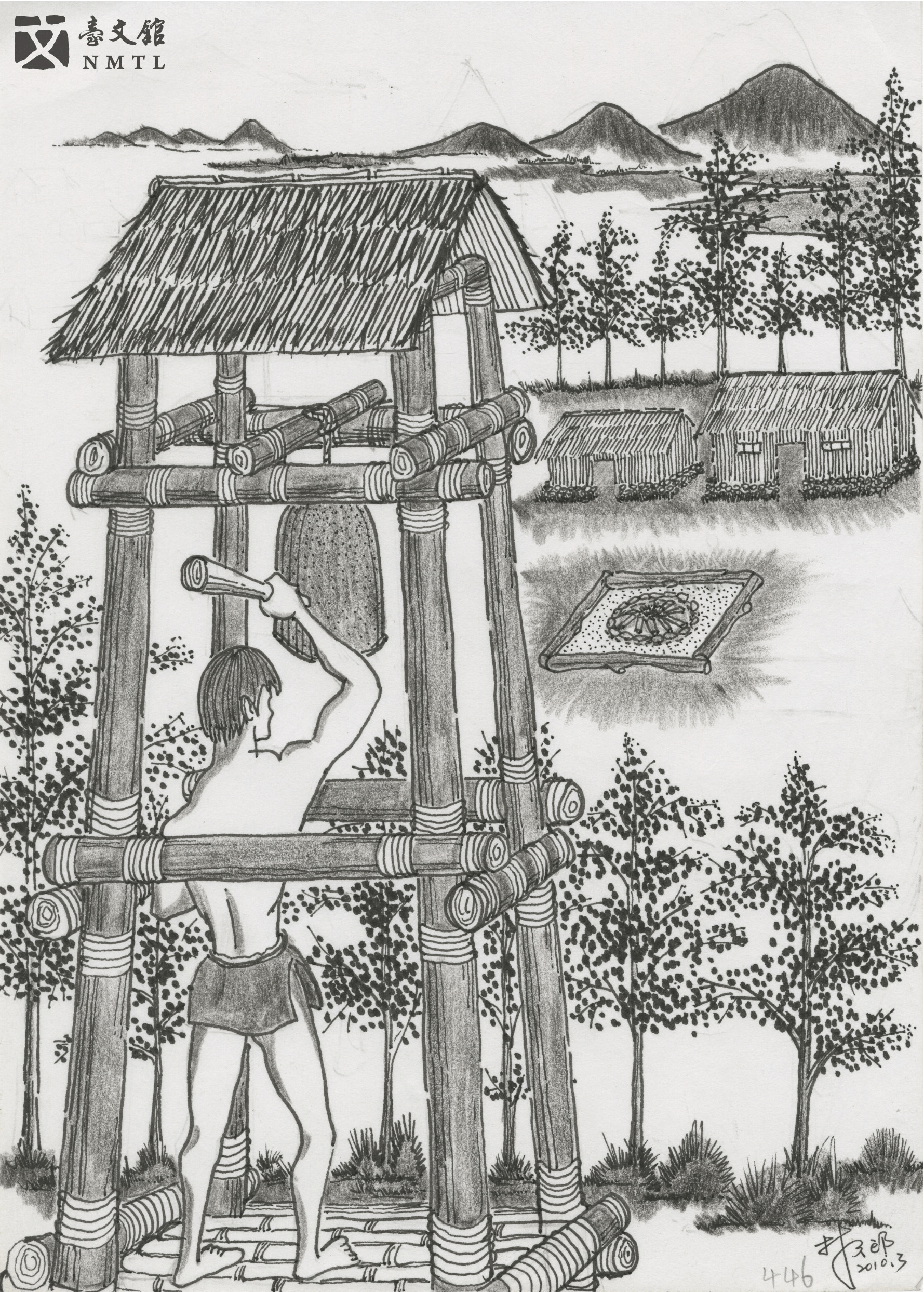
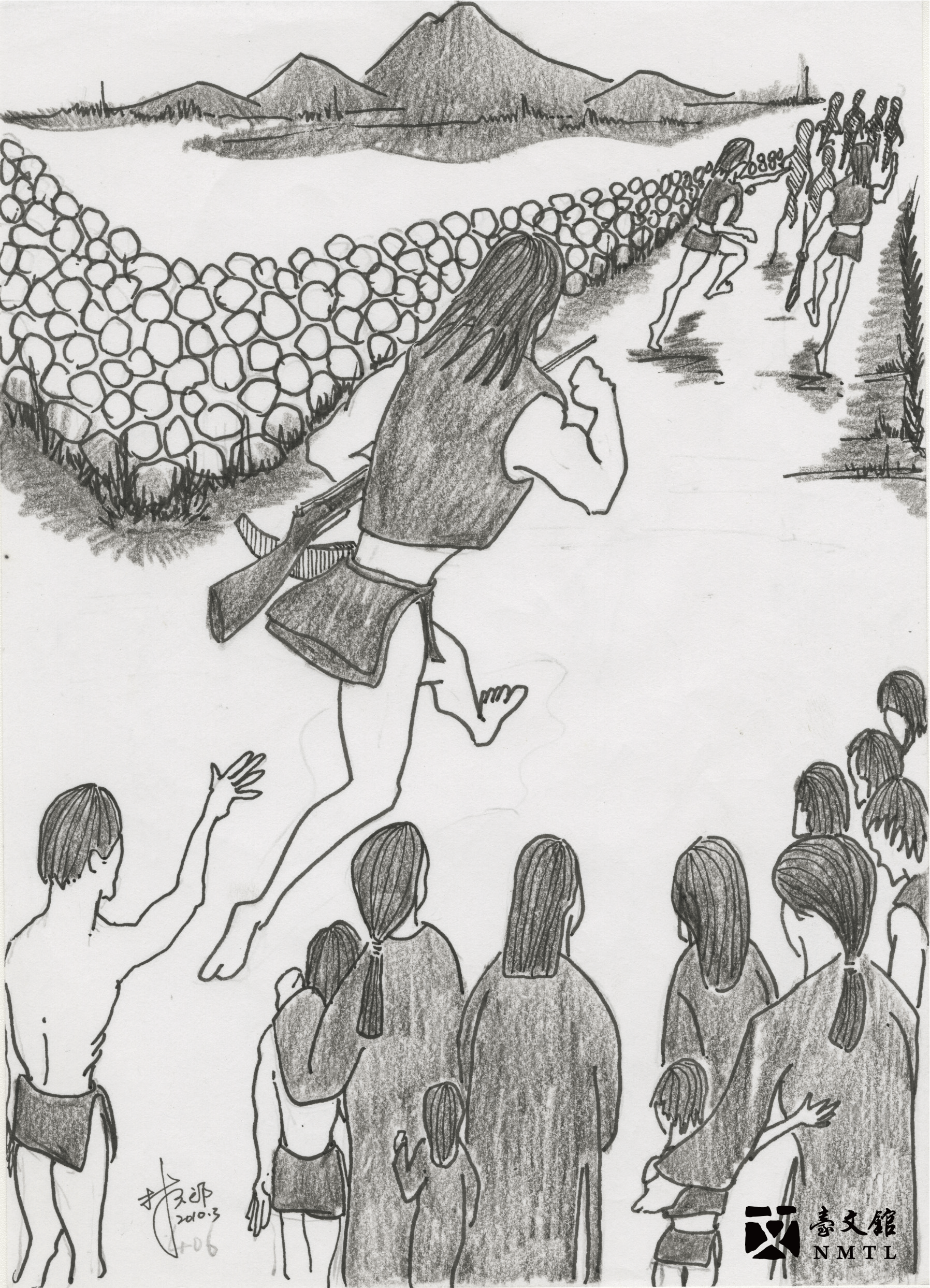
◈ Illustration of DI GUAN and SEQALU PEOPLE
Original illustration of SEQALU, drawn by Lin Liu-lang, Badai's younger brother.(Provided by Badai)
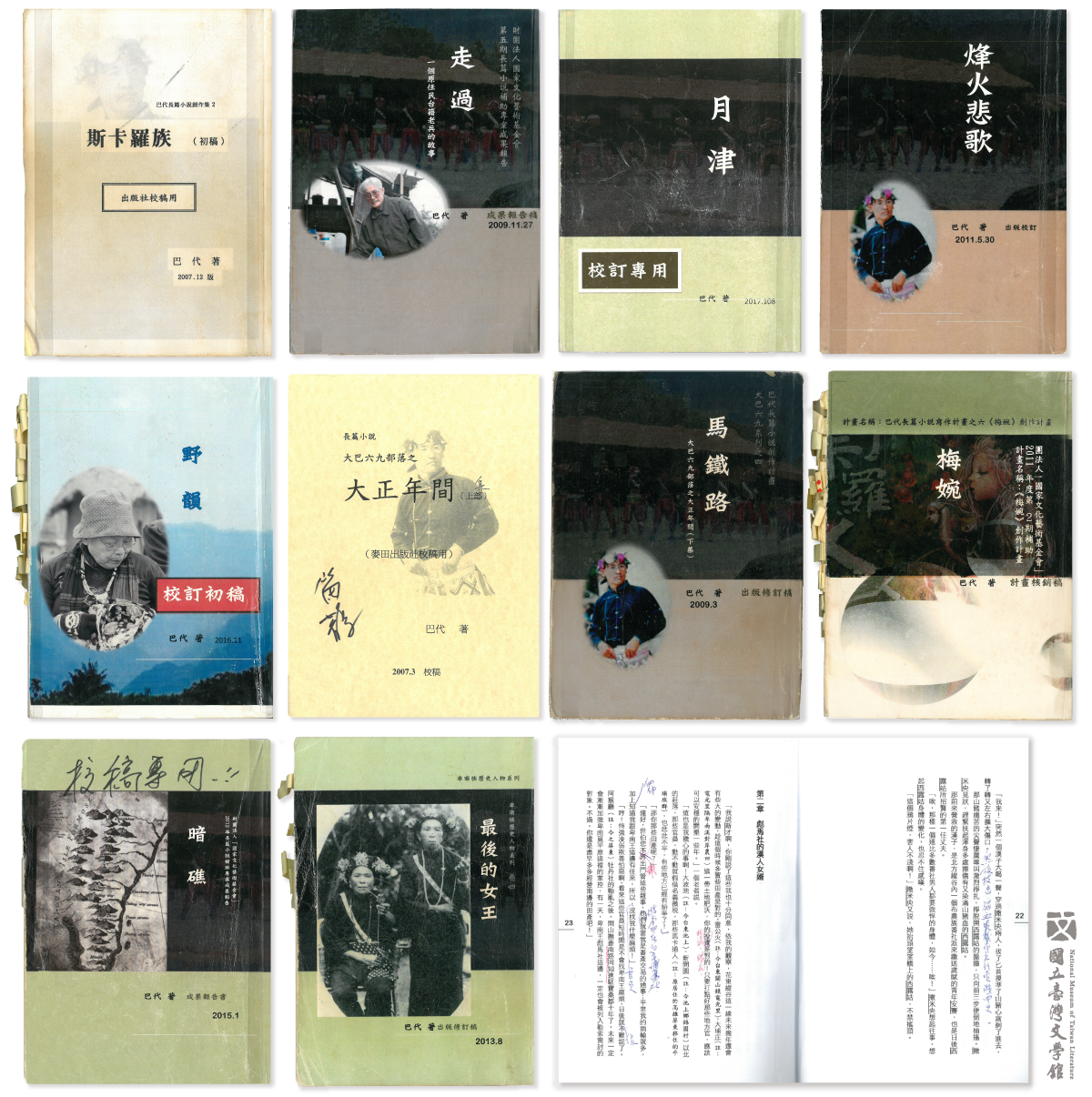
◈ Badai's Revised Draft
Badai (Chinese name: Lin Er Lang), a Puyuma native. After he retired from his work as a military instructor, he started focusing on writing. After winning an award in 2000, he showed extraordinary discipline and published a long novel at incredible speed. This novel illustrates fascinating Puyuma wizard rituals, a rich landscape of the Tamalakao tribe, and important historical events. In recent years, he has expanded into the realm of homosexuality in single middle age male immigrants from China as well as the history of literature. These are the proofs of his works before they were published. (Provided by Badai)

